France has become a popular tourist destination with its valued history, spectacular art, rich culture, delicious food and wine, and welcoming people. If you are planning a vacation to this remarkable country, here are some of the best landmarks to visit in France.
Louvre Museum
Reputed as the most visited museum in the world with millions of people gracing its halls every year, the Louvre Museum is a prominent French landmark. This prestigious museum houses a vast art collection from different cultures and eras, including French Sculptures, antiques and artifacts which date back to ancient Egypt, Islamic relics, and some of the world’s most famous paintings such as Leonardo da Vinci’s Mona Lisa.
Take time out to admire the beauty and architecture of the museum, particular the famous pyramid entrance. It’s stunningly beautiful and we can just sit for hours admiring it! You may want to go on a guided tour of the art in the museum, so you do not feel overwhelmed and can maximize your visit.
Eiffel Tower
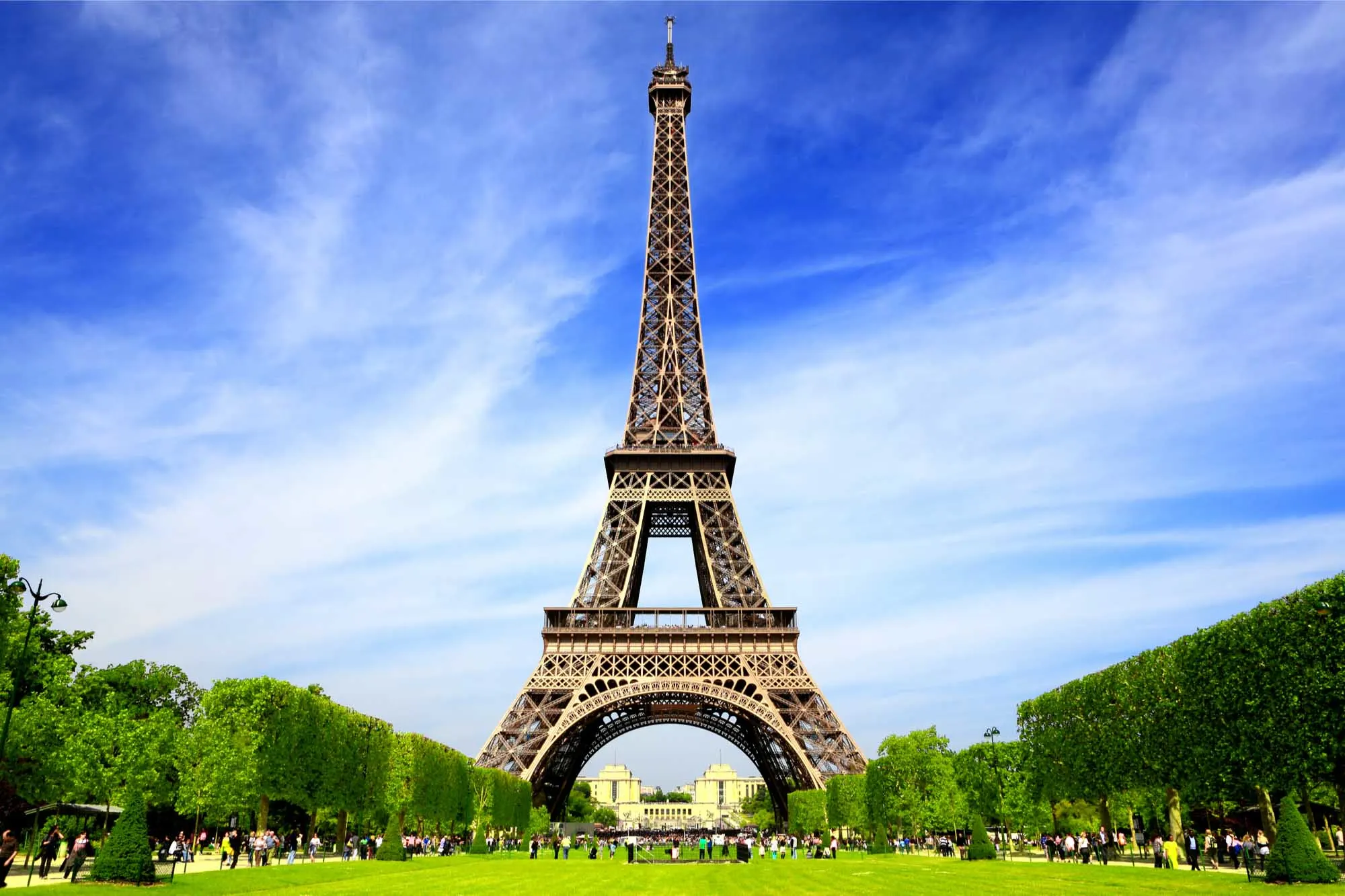
The Eiffel Tower is one of the most popular landmarks in France and one of the most recognizable structures in the world. It can be found on many postcards and pictures from Paris.
Standing out in the Parisian skyline, this 1,000ft long structure built by Gustave Eiffel has stood in Paris since it was presented to the public at the World Fair of 1889.
There is so much to do when visiting the Eiffel Tower. First, you can get a history lesson on the first floor of this spectacular building. Take your time and enjoy a breathtaking view of some of the most iconic landmarks in Paris, such as the Louvre Museum, Notre-Dame and the Seine River from the second floor.
Next, step into Gustave Eiffel’s reconstructed office at the summit of the tower. Finally, enjoy gourmet meals in restaurants found on the first and second floors.
Sacre-Cœur
Located atop Montmartre hill, Sacré-Cœur, also known as the Sacred Heart Basilica, attracts thousands of visitors yearly and is a must-see landmark in France. It is also one of our favorite spots in Paris and we stop here every time we’re in the city.
This landmark is one of the most iconic modern Catholic Churches, having been constructed and opened after the First World War. While the church holds firm to the ancient architectural style of most prominent Catholic churches, it favors modern art, serving as an opportunity to show the evolution of both architectures.
Beyond the art and architecture, you should find your way to the top of Sacré-Cœur and get a beautiful view of Paris. We particularly enjoy it at sunset.
Sainte-Chapelle
Located in the City of Lights, Sainte-Chapelle stands as proof of architecture as an art form. Its unique architecture takes one back to the Gothic style used to build the most prestigious 13th century structures.
Sainte-Chapelle was once a holy site for Christianity. It served as a safe location where some of the most exclusive Christian artifacts were kept. While you will not find these relics here today, there is still so much to see. While touring the Sainte-Chapelle, you can climb the building’s unique spiral staircase and see the 15 large windows depicting thousands of Bible scenes.
It is a particularly popular destination at sunset, when the stained-glass windows glow brightly. And concerts are occasionally held here in the evenings.
Arc de Triomphe
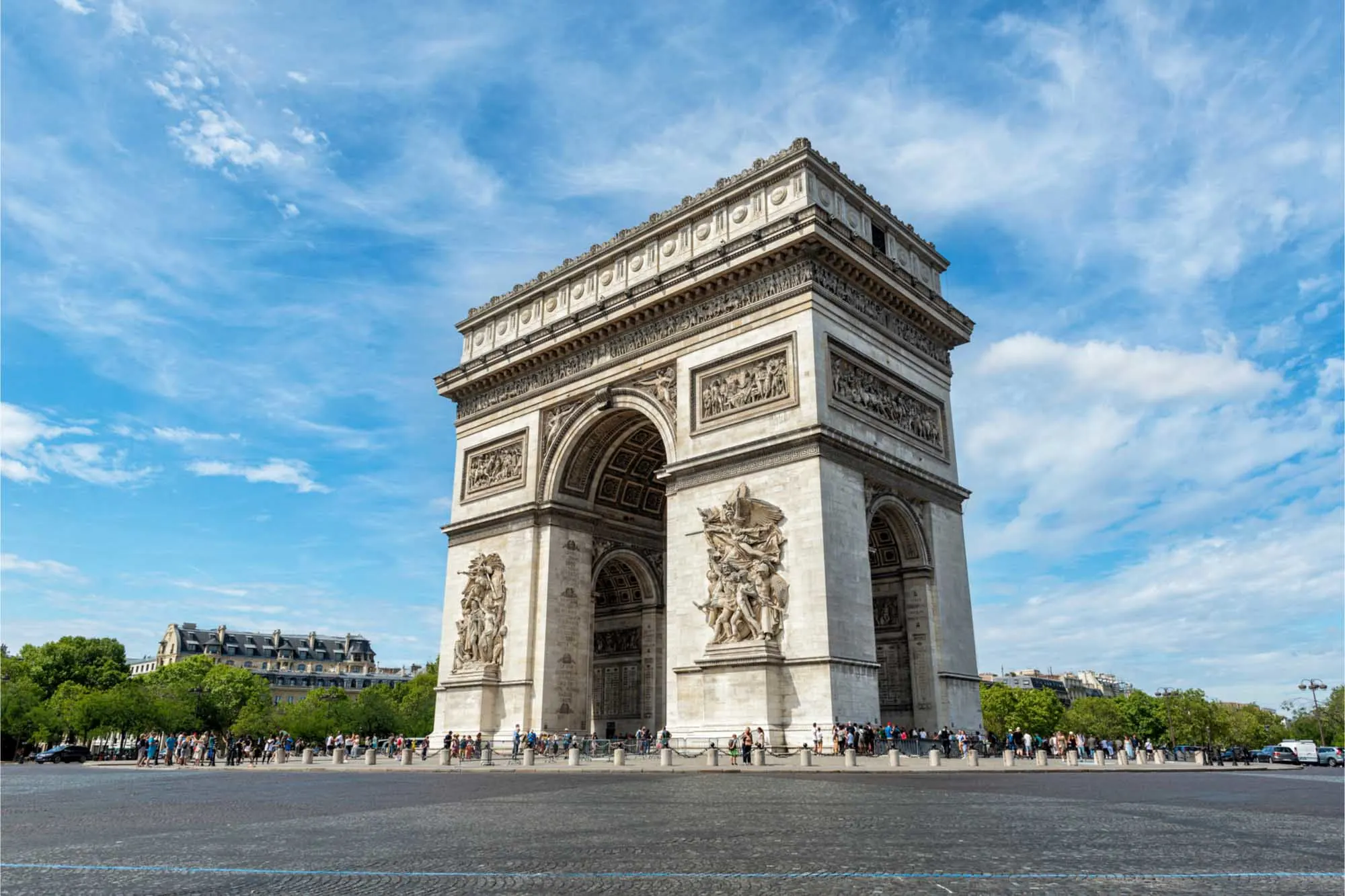
The Arc de Triomphe was erected in honor of Napoleon’s 19th-century victory in Austerlitz, becoming a unique French symbol of triumph. It later became a general symbol of victory when the French army marched under the Arc de Triomphe after World War I. The structure currently serves the dual purpose of remembering Napoleon’s victory and commemorating the First World War.
Some of the things to see at the Arc de Triomphe include the tomb of the Unknown Soldier, which serves as a memorial for all the soldiers who died in World War I, the Eternal Flame, which burns at the tomb, and finally depictions of Napoleon’s major victories. You can climb the structures of 384 steps and get spectacular views of Paris. You can also watch the rekindling of the Eternal Flame at 6:30 pm daily.
Notre Dame de Paris
Notre Dame de Paris is one of the world’s most popular and most epic religious structures. It is famous for its place in modern literature, featuring majorly in the contemporary classic novel by Victor Hugo, the Hunchback of Notre Dame.
Some of the activities you can do at this prestigious church include going on a tour to admire its gothic design as well as its collection of artwork. While touring the church, be sure to visit the Cathedral’s underground crypts. You can also attend mass at the church since it is still an operational church.
A massive fire in April 2019 severely damaged the structure. However reconstruction work has already begun and the structure is expected to re-open.
Champs-Elysees
Champs-Élysées attracts a large number of tourists who are often content to walk along the tree-lined sidewalks of the avenue. This is one of Europe’s grand boulevards and it is just begging to be strolled.
If wandering the Champs-Élysées, you can catch a movie or two in any of the numerous cinemas on the avenue. If you would prefer theatre experiences, the avenue also has multiple theatre auditoriums. It is one of the most visited and beautiful avenues in the world and is also synonymous with high-end shopping.
The avenue also links you to other important French landmarks, such as the Arc de Triomphe.
Jardin du Luxembourg
The Jardin du Luxembourg is one of the most popular gardens in France, attracting tourists who long to take in its beauty and enjoying the slower pace the space provides.
Jardin du Luxembourg is made up of several gardens designed in different styles. While visiting, you can relax in any of the gardens, engage in outdoor activities that take place here, and see the Luxembourg Museum located in the park.
Centre Pompidou
The Centre Pompidou is the city’s home for modern art, ranging from its unique exterior to the extensive collection of contemporary art within it. The exterior of the Centre Pompidou is unique in that the building’s wiring, plumbing, and other structural features are outside.
Take a tour of the museum and spend some time admiring its strange but unique architectural style. In many ways, the building is the destination in itself. But yes, you can also enjoy the exhibitions inside the museum. There is always an enjoyable special exhibition on display.
Place de la Concorde
This octagon-shaped landmark is the largest public square in France. The Place de la Concorde is popular for connecting many of the Parisian landmarks.
Some of the attractions at the Place de la Concorde include lovely sculptures, picturesque fountains, and a giant 3000-year-old Egyptian obelisk that the ruler of Ottoman Egypt donated in 1830.
Jardins du Trocadéro
Jardins du Trocadero was created by the French architect Roger-Henri Expert in 1937. He designed it as a way to showcase the arts and “techniques in modern life.”
This beautiful garden features the Warsaw Fountains, a rectangular water structure comprising 12 huge fountains that each project water over 30 feet in the air. This fountain produces a beautiful mirror effect. You can have a picnic on the lawns that surround the fountain. The garden also provides a great view of the Eiffel Tower.
Musee d’Orsay
The Musée d’Orsay was originally built in 1900 for the Universal Exhibition as a train station. It was remodeled as a museum in 1979, while still maintaining the look of a train station. And it is beautiful, both the art and the architecture.
There is a vast collection of art in the Museum, featuring artworks gathered from 1848 to 1914. The museum is also popular for its exhibition of French Impressionism which can be found on the fifth floor of the museum and is our favorite art museum in Paris!
Les Invalides
Les Invalides is a complex of buildings dedicated to commemorating the French military and showcasing France’s tumultuous history of wars.
Here, you will find the Cathedral of St. Louis des Invalides with its beautiful decor, iconic art and captivating golden dome. Les Invalides also houses the Musee de l’Armee, which is one of Europe’s best military museums, and Napoleon’s Tomb, which lies directly under the golden dome.
On our first visit to Paris, we stumble on a group of military re-enactors acting out a performance. While visually captivating for tourists like us, it is clear that this place holds special significance for the French people.
Pont Alexandre III Bridge
Pont Alexandre III is often referred to as the most beautiful bridge in the world, and with good reason. The bridge in Paris features art nouveau lamps, four gilt gold statues at the corners, and golden highlights. The bridge served as a symbol of the alliance between France and Russia. This alliance was brokered in 1892 by Tsar Alexandre III, whom the bridge is named after.
Apart from the beauty of the bridge, this historical bridge offers spectacular views of the Les Invalides, Champs-Élysées, and the Eiffel Tower. It is one of the most unique landmarks in France and a must-see for everyone.
Cathédrale Notre Dame de Strasbourg
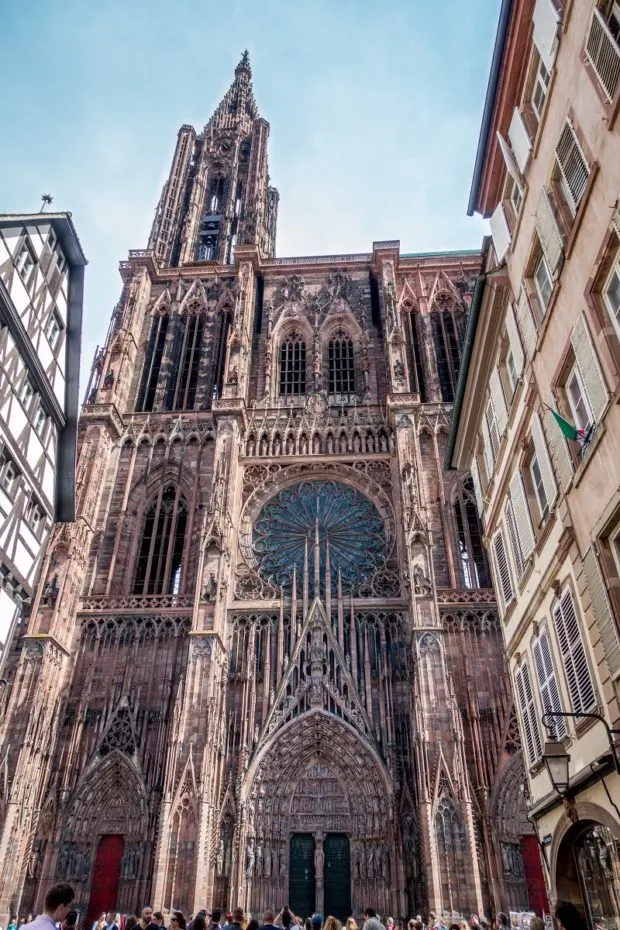
The Cathédrale Notre Dame de Strasbourg is one of the most famous buildings in France. It is an architectural wonder that has experienced series of restorations and renovations.
Admire its pink sandstone exterior that changes color depending on the light of the day. Take in its beautiful spire and the several intriguing sculptures found on the walls. When you step through the doors into the cathedral, be sure to take a moment to admire the large picturesque stained-glass windows, the giant organ covered in decorations, as well as the ornaments that are said to have cryptic codes and meanings hidden in them.
Strasbourg Grande Île
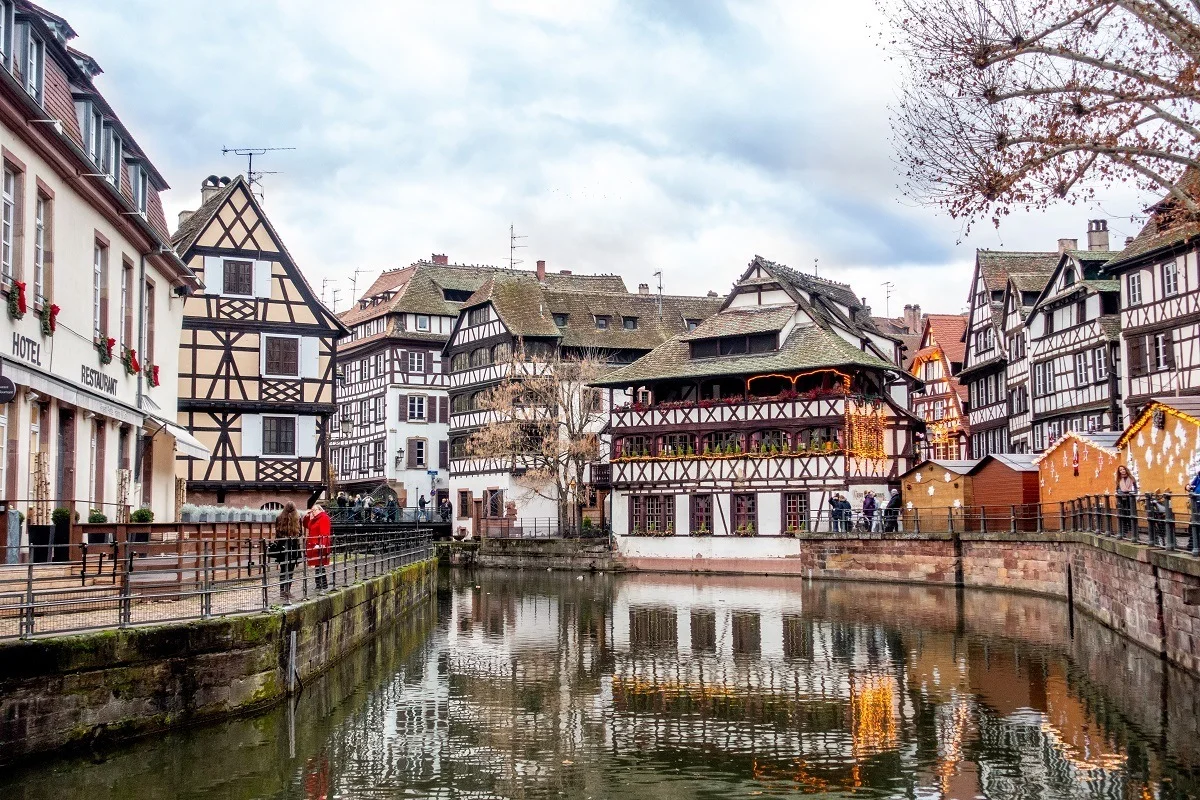
Grande Île is an island situated at the heart of Strasbourg’s historic center. It is packed with gourmet restaurants, boutique shops, and more charm than you can possibly image. In the winter, the city’s famed Christmas market snakes its way through the small lanes.
Whether you visit in summer or winter, explore this beautiful island on foot, starting from the city’s central square to the Strasbourg Cathedral. From there, take a walk to La Petite France, which used to be home to Strasbourg’s working-class population of fishermen, millers and tanners. These days, the area consists of pastel-colored buildings built in the 16th and 17th centuries.
La Petite Venise in Colmar
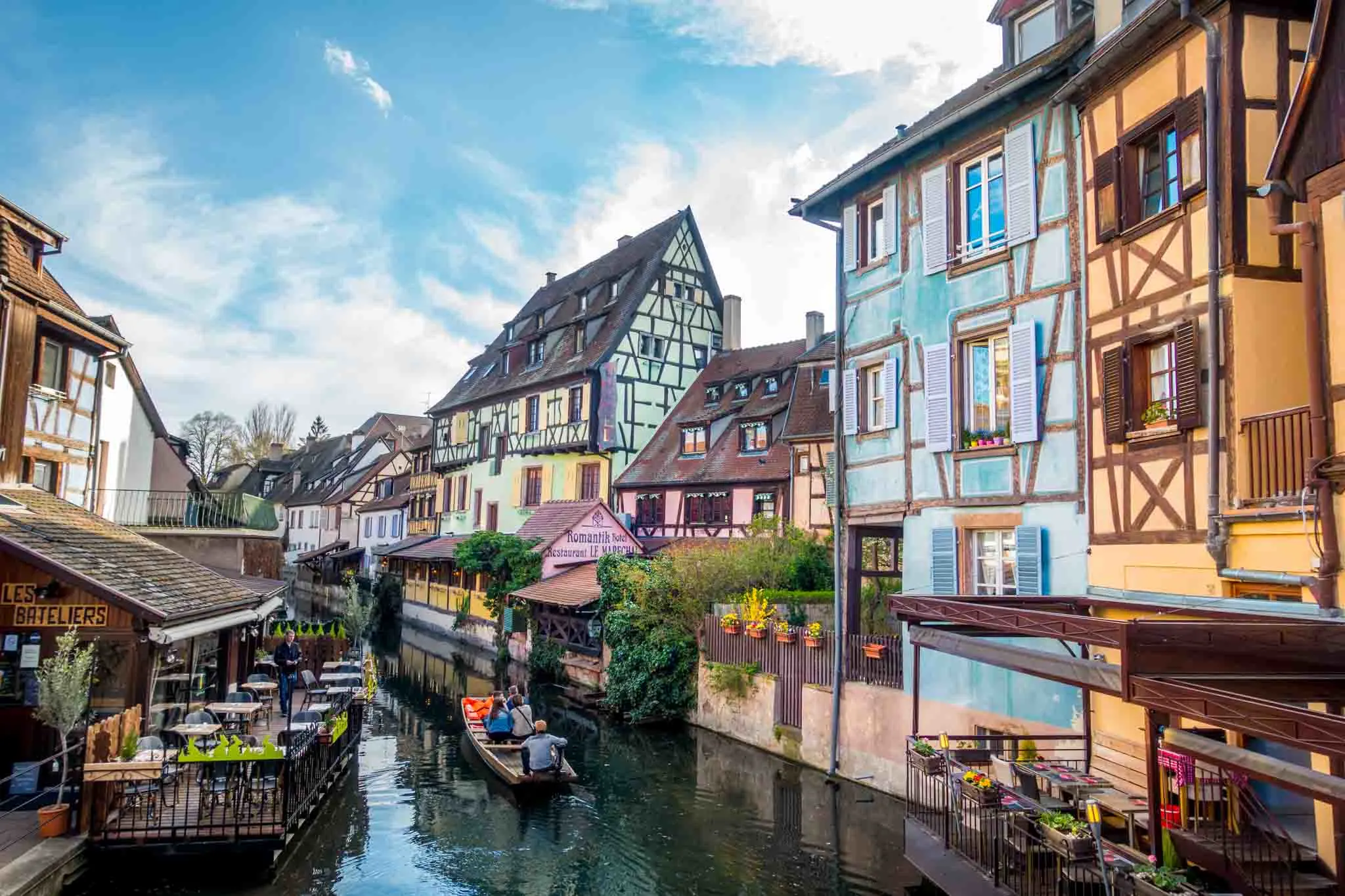
Though not exactly resembling Venice, La Petite Venise takes its name from being a water city just like that famed Italian city. There are canals and you can take a ride on a motorized boat (instead of a human powered gondola).
But just like Venice, you can explore this picturesque location. When visiting Colmar, take time to explore the backstreets, side lanes and alleys. These colorful streets have restored pastel-colored half-timbered houses, which are often covered in geraniums during summer. The rooftop verandas of Rue Des Tanneurs, where hides for leather are dried, and the former fishers’ quarter, Quai de la Poissonnerie, all come together to create an ethereal ambience.
And in the winter, the entire area fills with one giant, magical Christmas market, which is one of our favorites in all of Europe.
Palace of Versailles
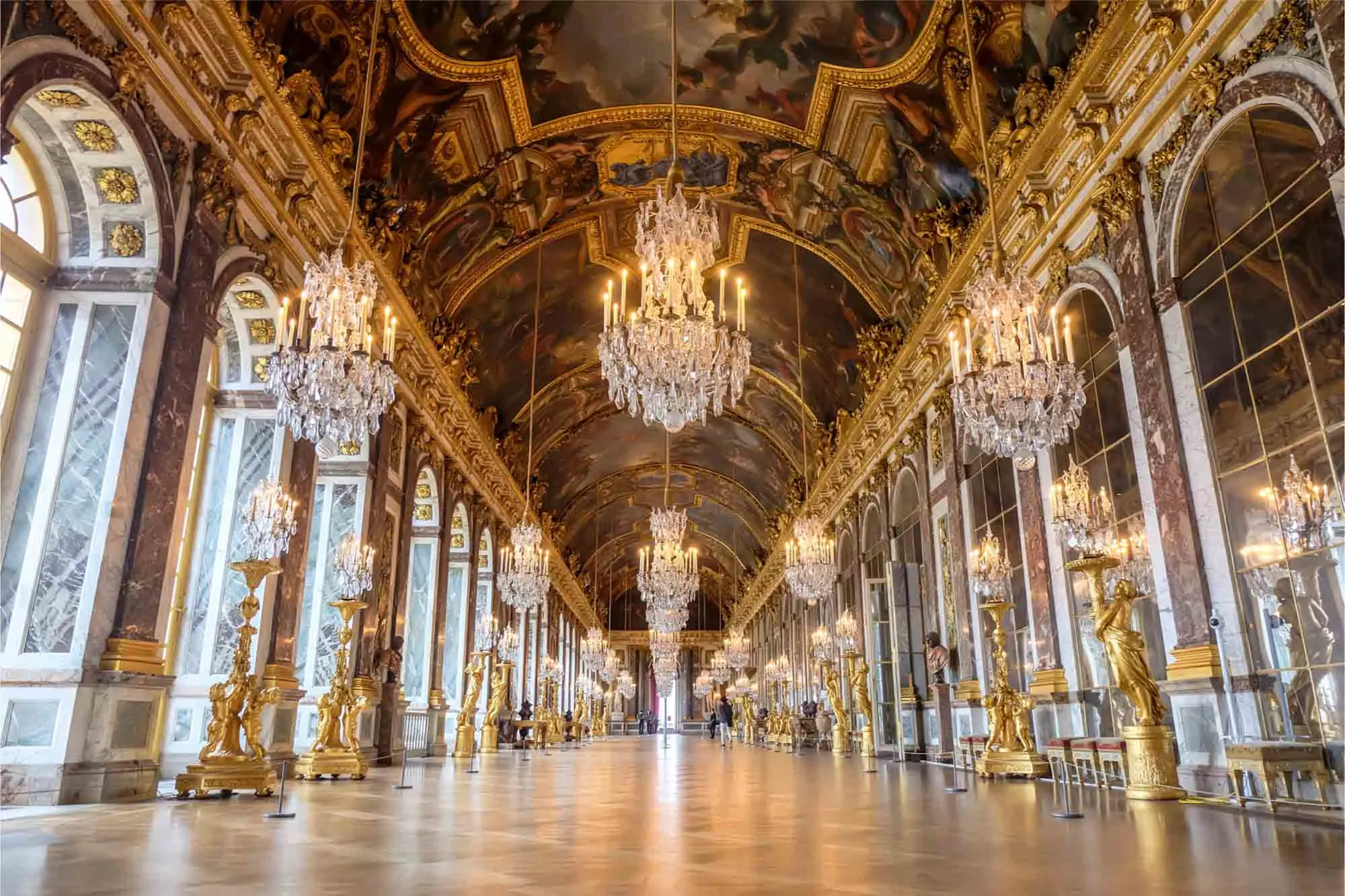
This is one of the most famous French landmarks. The Palace of Versailles is a 17th-century structure that was completed over the course of 40 years. Located in the Yvelines department in the Île-de-France region about 40 minutes from Paris, the Palace of Versailles is a magnificent structure that was built by Louis XIV.
Beyond being a residential palace, Louis XIV used it to host numerous parties and theatre and opera performances. After his demise, his son, Louis XV, took up residence there, living there until the French Revolution.
There is so much to see on a tour of the Palace of Versailles. Admire its beautiful imposing structure, walk through the rooms, check out the Hall of Mirrors (where the Treaty of Versailles was signed, ending World War I), and explore the scenic Gardens of Versailles with its beautiful groves, fountains and sculptures.
Mont Saint-Michel Abbey
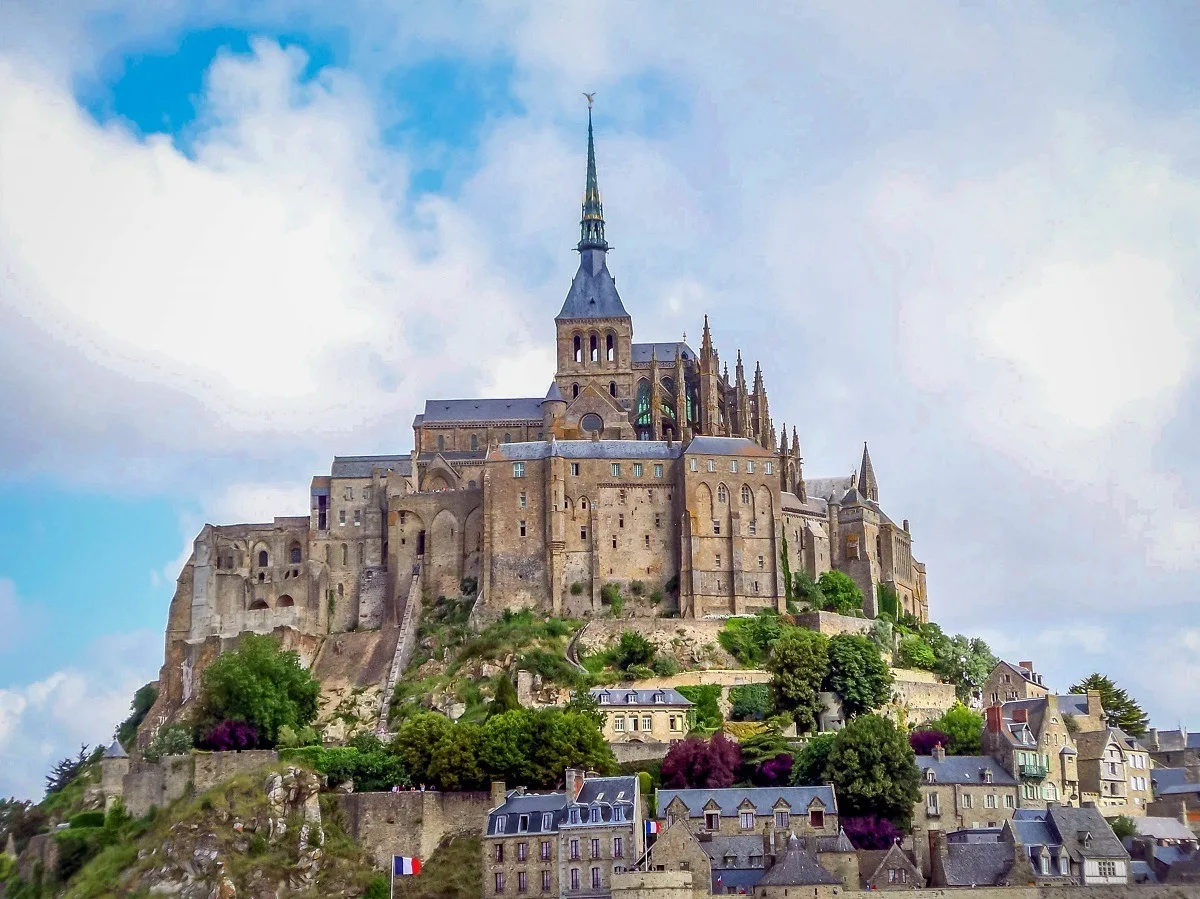
Located in Normandy, Mont Saint-Michel is one of the most beautiful landmarks in France because of its picturesque location. This impressive monument is a monastery built atop a rock, which is typically surrounded by the Atlantic waters at high tide.
The Abbey was initially a Roman-style building built in the 11th century. It was later reconstructed in the 13th century, transforming from a Roman-style building to a Gothic-style building.
At Mont Saint-Michel, you will find two wings with the church in one wing and La Merveille, the home for the monks in the other wing. You will also find a golden statue of Archangel Michael at the top of the Abbey’s spire. During a tour of the Abbey, you will also find out more about its history, including the fact that it was used as a prison during the French Revolution.
Warning: the tiny lanes and rampart walls can swell during the day with impossible numbers of day trippers coming from all over Normandy and even from Paris. But at night, we discovered we could have the village and its abbey practically to ourselves. When the sun goes down, the Mont becomes magical!
Loire Valley Castles
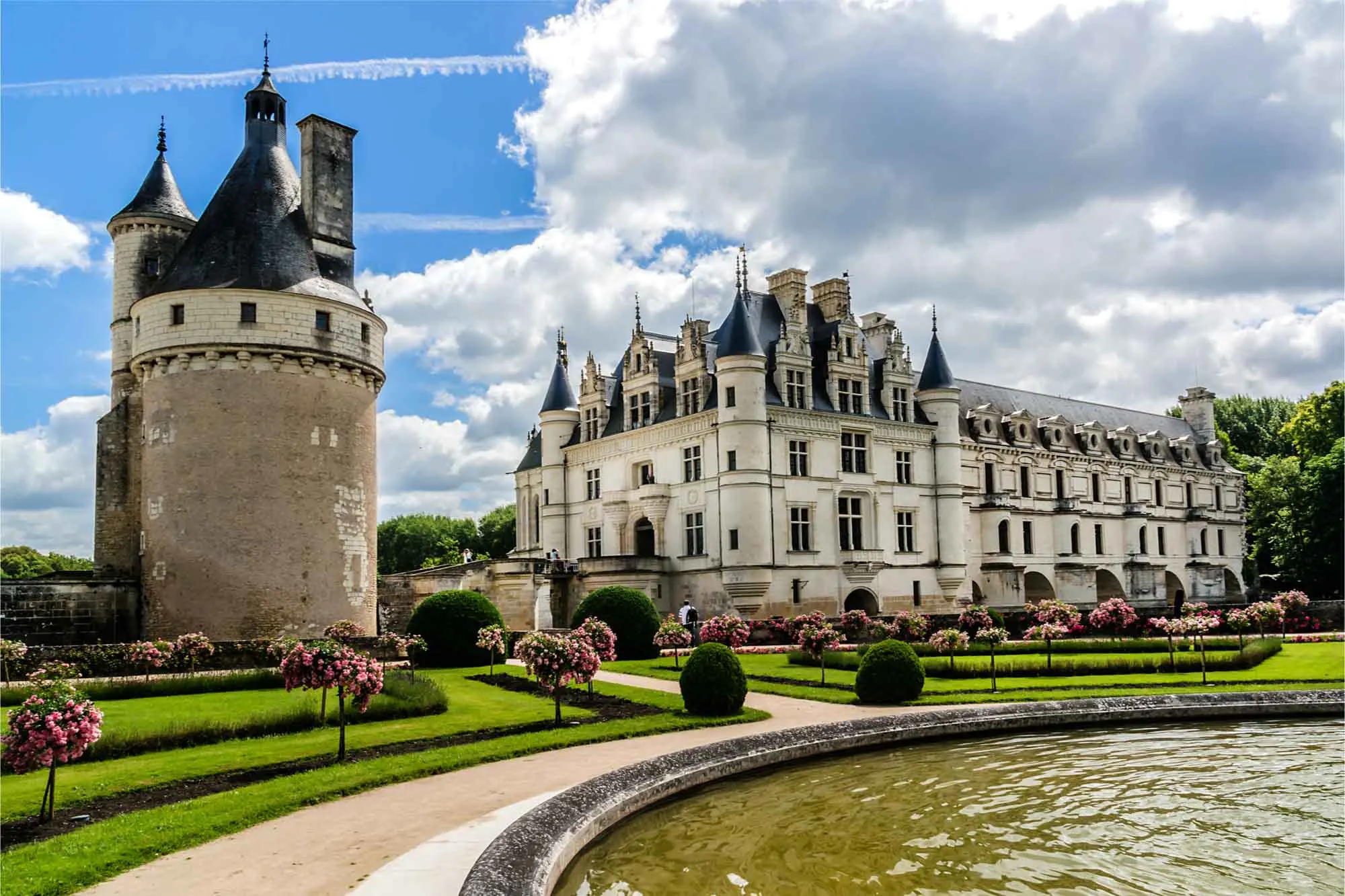
The Loire Valley is renowned in France for its incredible collection of castles. They were initially used by the French Royals, who considered them getaway properties for when they wanted to leave the royal court life of Paris.
Commissioned for construction during the French Renaissance, the castles served as pleasure palaces nestled in the lush Loire Valley. The French Royals threw some of their legendary lavish parties in these splendid castles. Eventually, the French nobility acquired the castles after the royals built pleasure castles elsewhere.
When visiting, you can take a tour of each castle while learning the history attached to them. Check out the beautiful Château de Chenonceau castle, explore the magnificent Château de Chambord, and visit the regal Château de Villandry and walk through its inviting gardens.
Provence Lavender Fields
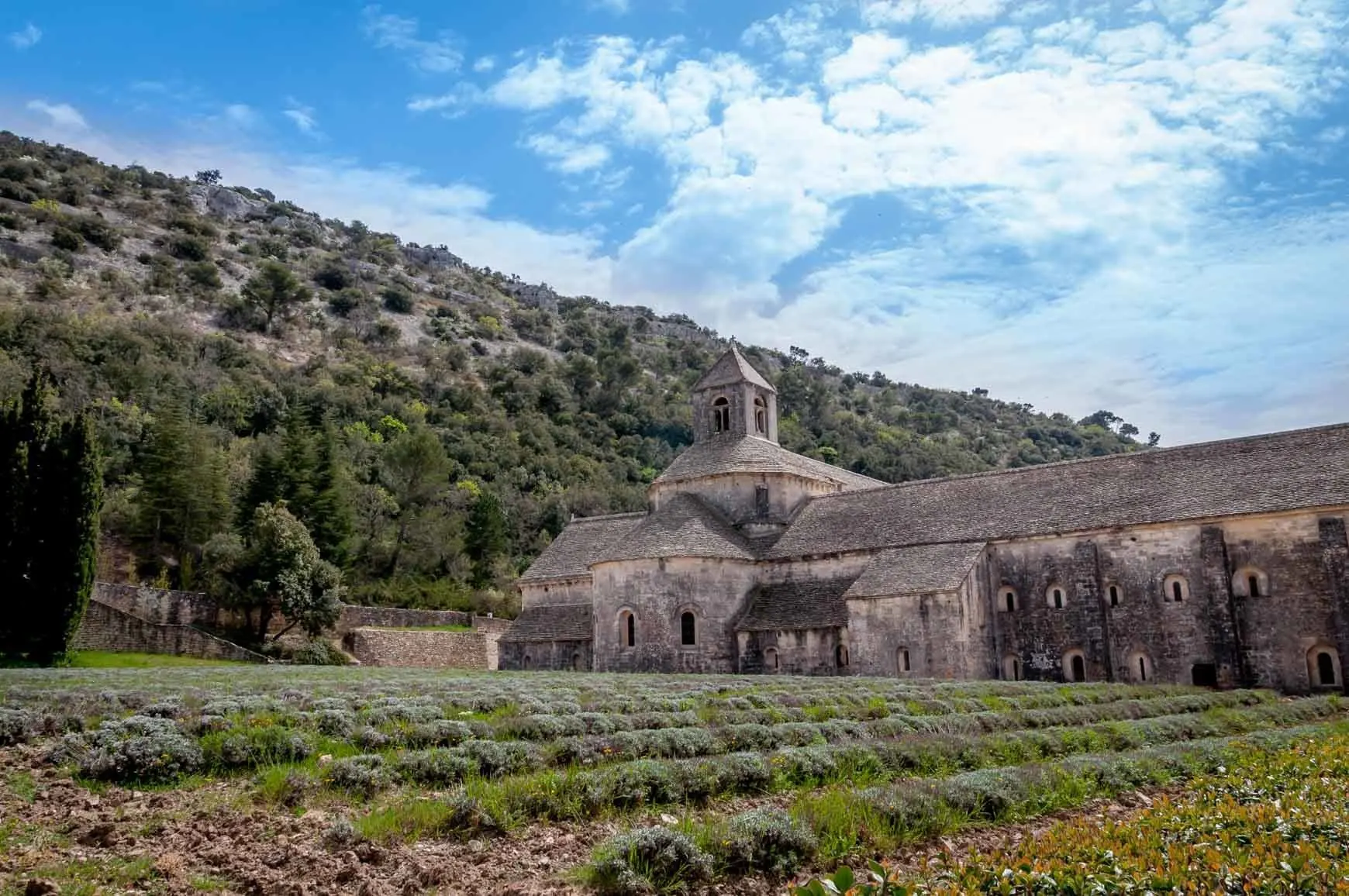
If you love flowers and colorful landscapes, you should visit Provence, especially during summer. Provence is known for its beautiful fragrant purple lavender flowers, which bloom across fields all over the area between mid-June and mid-August when they are harvested and used in fragrances, soaps, and other cosmetics.
Take a trip to Provence, ideally anytime between the last days of June and the early days of July when the flowers are just beginning to bloom and before the peak sales period for the flowers. Be sure to visit the farms, which are often family owned.
Some places to find the best lavender farms in Provence include the beautiful Sénanque Abbey with its field of lovely lavender flowers and Sault, which is popularly referred to as the lavender capital.
Arena of Nimes
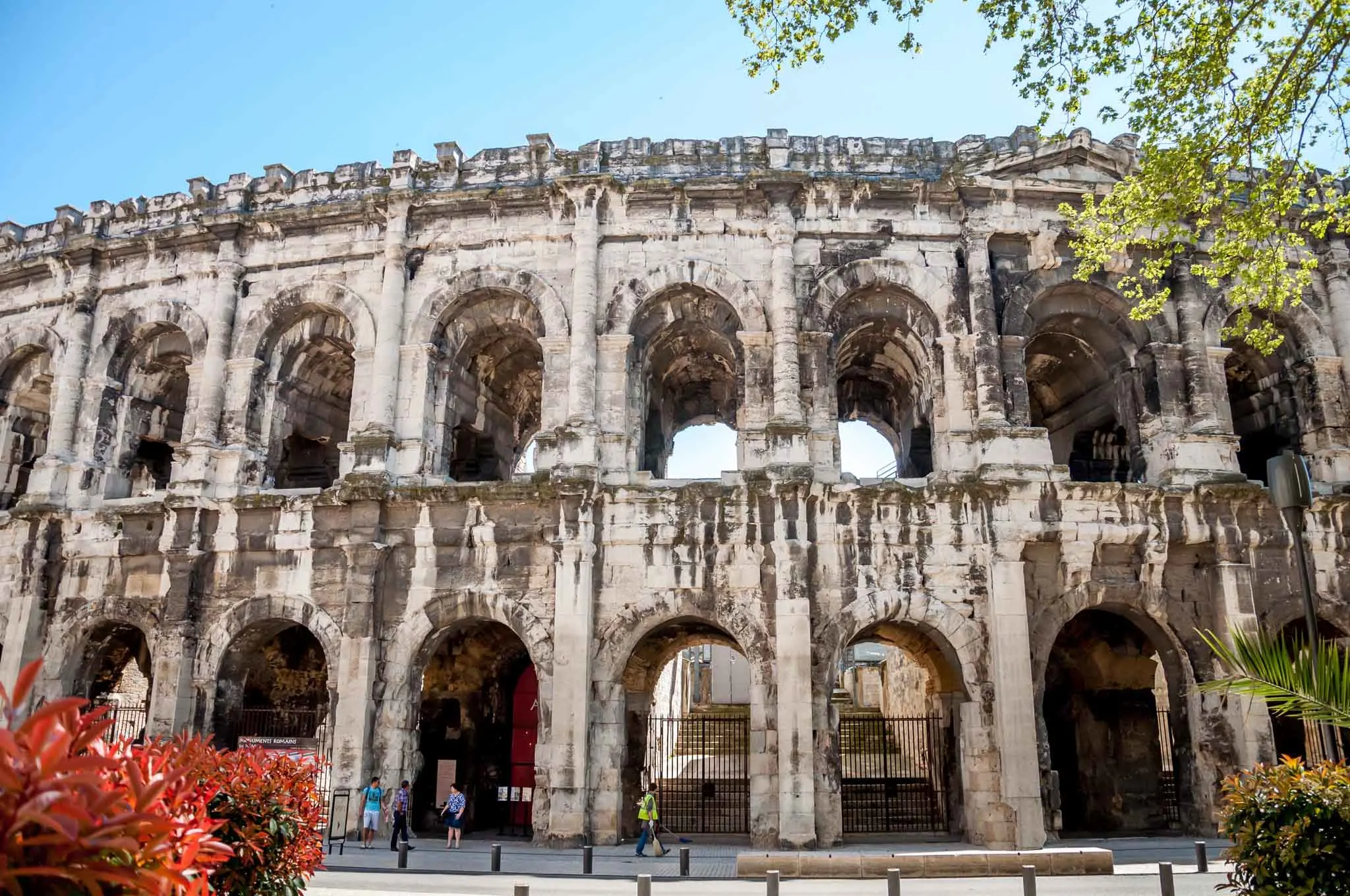
The Arena of Nîmes is an elliptical-shaped arena constructed about the same time as the Colosseum in Rome. It is the world’s best-preserved amphitheater.
The Romans used it for hosting the popular gladiator fights during their rule of the area. It was later used as a fortified village to protect the locals from invasions in the Middle Ages. The Nîmes Arena is still in use, with concerts and sports competitions being hosted here.
If you are visiting, go on a tour of the arena and visit its gladiator quarters.
Roman Theater of Orange
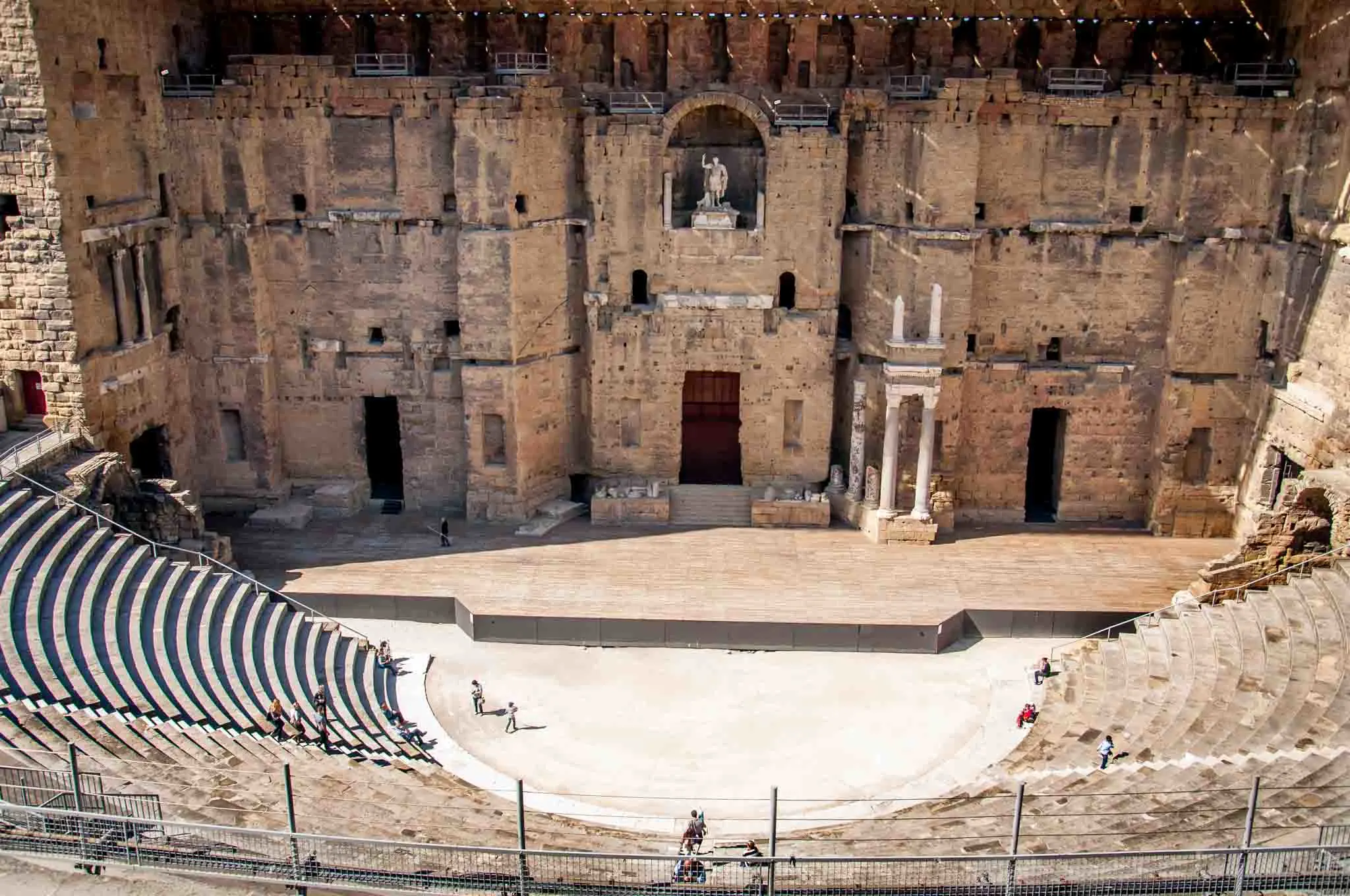
The Roman Theatre of Orange was the leading center for entertainment in the city of Orange and the surrounding area for four centuries. The theatre features an enormous statue of Emperor Augustus mounted on the center stage.
Apart from seeing the statue and taking a tour of the theatre, you can watch opera performances here as well. The theatre is perhaps best known for hosting an opera performance titled “Roman Festivals” twice a year, which features a reenactment of the Olympic Games, gladiators and costumes worn in that era.
This is one of our favorite places to visit in Southern France and should not be missed.
Pont d’Avignon Bridge
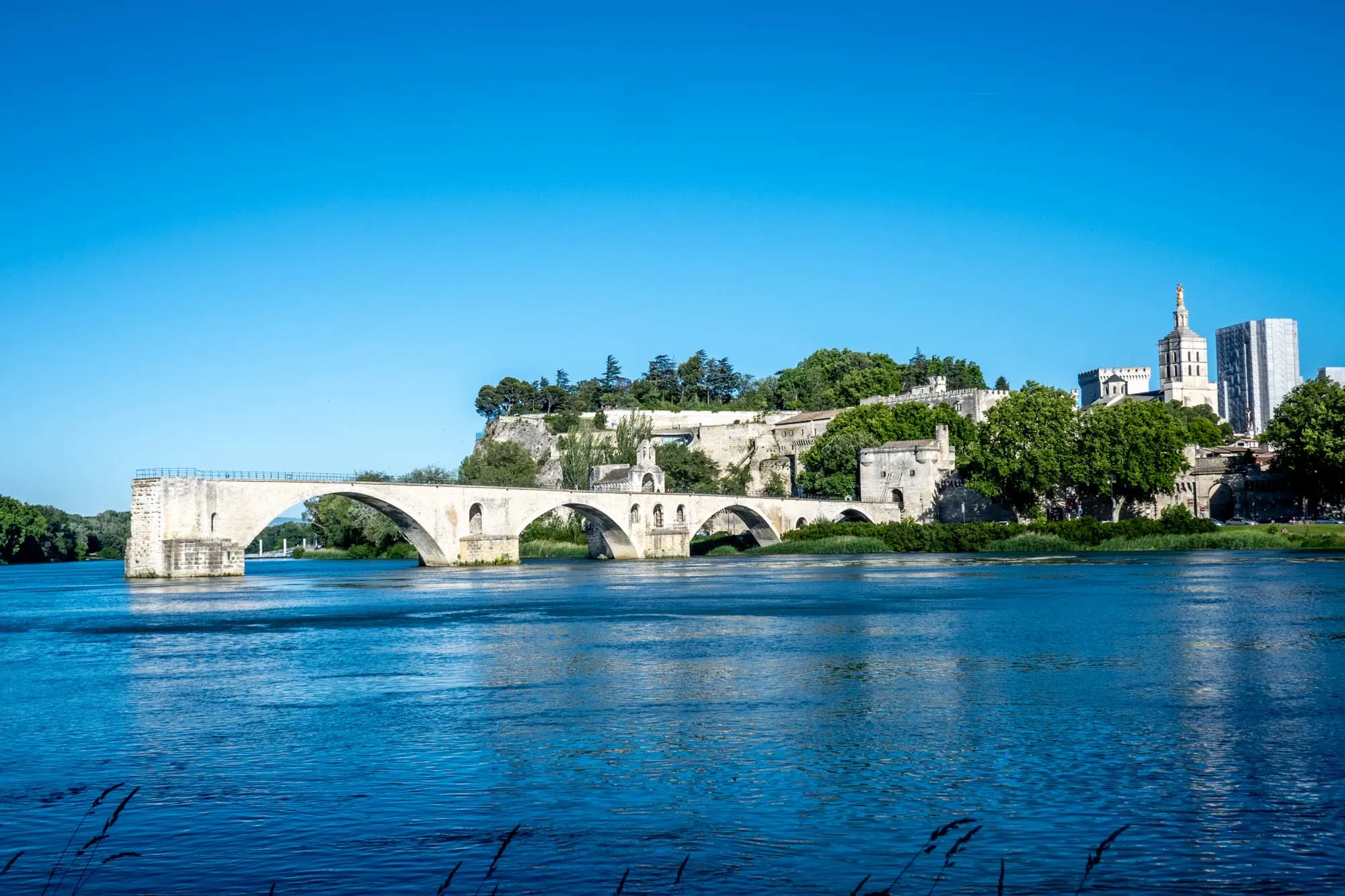
The Pont d’Avignon is one of the most popular historical landmarks in France and is the most recognizable image of the city of the Avignon. The bridge, bringing hundreds of thousands of people to the area yearly, is one of the top Avignon attractions and a can’t miss spot.
The bridge was originally made up of 22 arches connecting Avignon with Villeneuve lez Avignon. Currently, it has only four arches as a result of a flood that destroyed the others in the 17th century. While touring the bridge, you can visit the Chapel of Saint Nicholas, located on its second arch.
As cool as the bridge is, the view of the bridge from across the river looking back at the city is even more impressive. We discovered a small park on the other side with a parking lot to take in the views. Tip: the views are most specular at sunset.
Palais des Papes
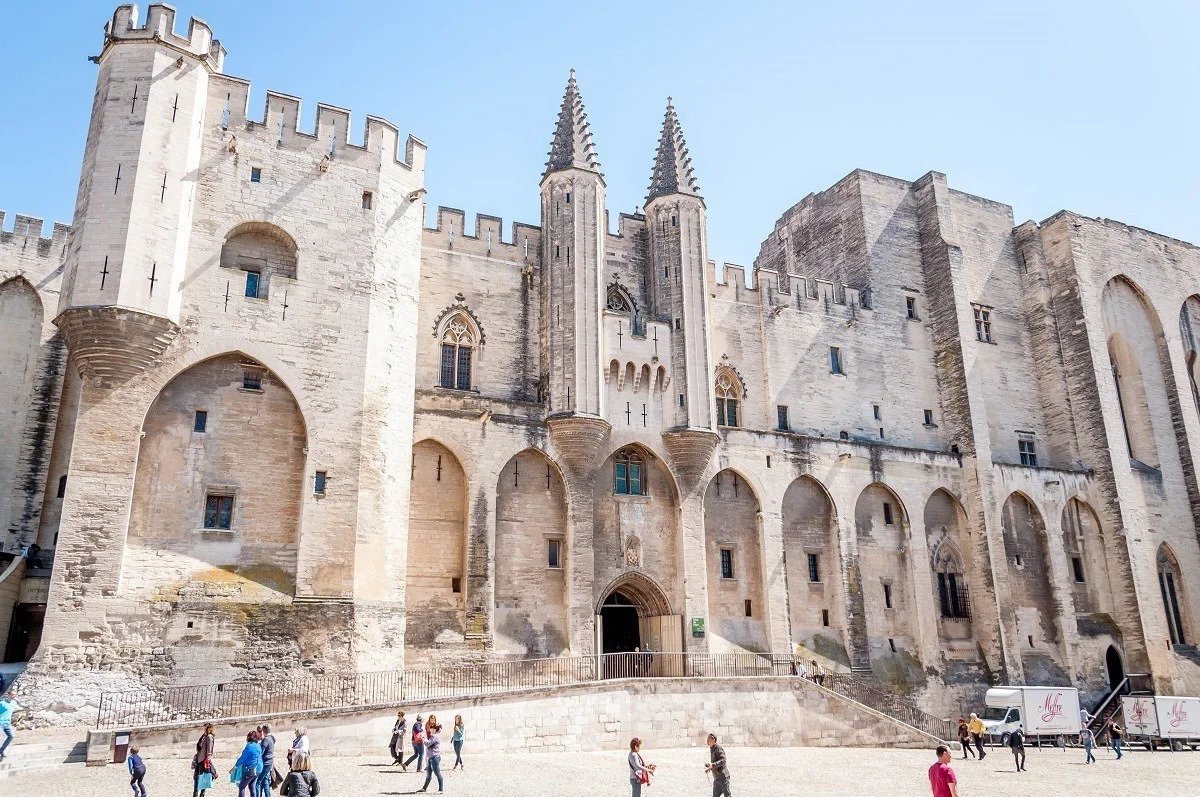
The Palais des Papes or Palace of the Popes in Avignon is an ever-changing medieval palace constructed by the Catholic Popes starting from Pope Benedict XII in the 13th century. During this period of time (known as the Avignon Papacy or Babylonian captivity), the Popes resided in France and therefore Avignon (not Rome) was the headquarters of the Catholic Church.
A tour of the grounds entails seeing the entire palace, walking through its stately halls and rooms, catching a view of Avignon from the roof terrace and enjoying a drink at the rooftop cafe.
If you are a history buff, you’ll love visiting this impressive site.
Roman Ruins in Arles
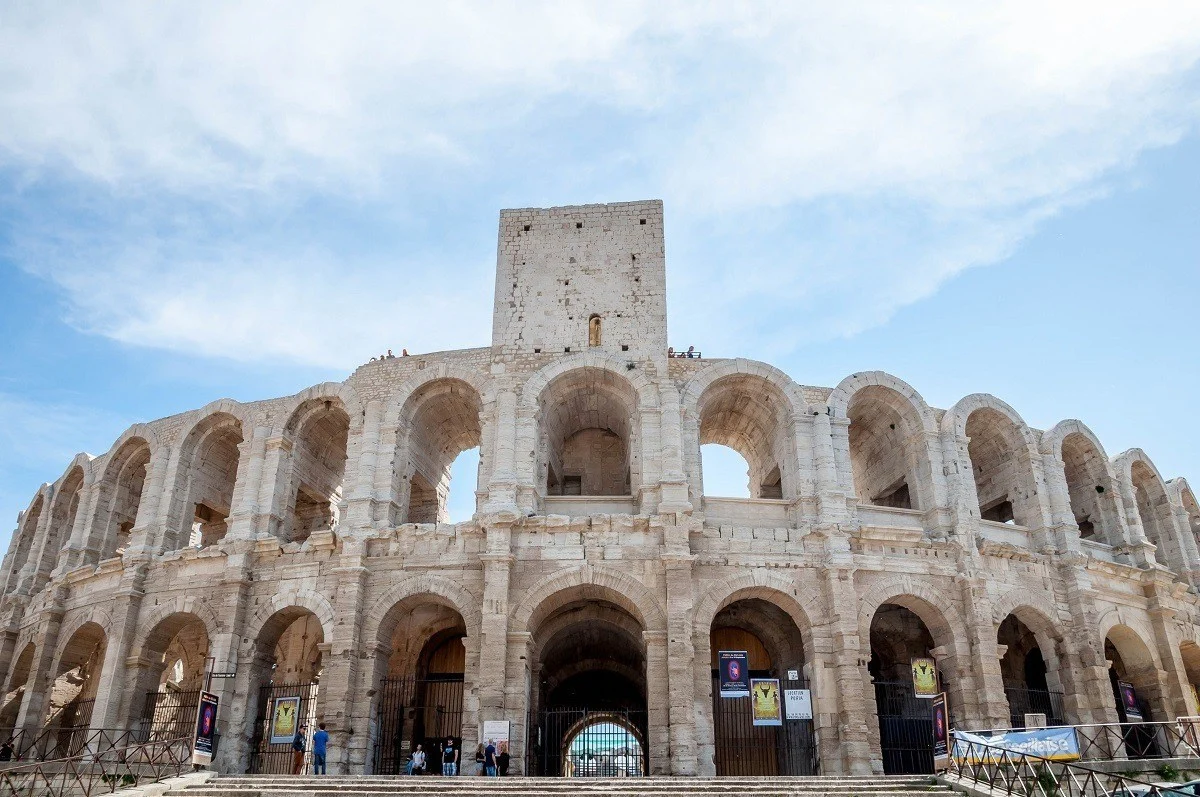
The Roman Ruins in Arles are the houses and monuments that were built by the Romans when they expanded the city of Arles in 123 BC. Some of the sights to see here include the amphitheater, where you can watch one of the numerous bull fights or partake in a local festival. You will also get to see the ancient theatre where you can watch musical performances.
You can also see the Cryptoportiques, the three hollowed-out underground tunnels that form a “U”, the ancient spa complex with its thermal baths, and Les Alyscamps, which used to be a Roman burial ground.
It’s best to visit on market day. While the city is much more crowded, taking in one of the lively Provence markets adds to the experience.
Ochre Cliffs of Roussillon
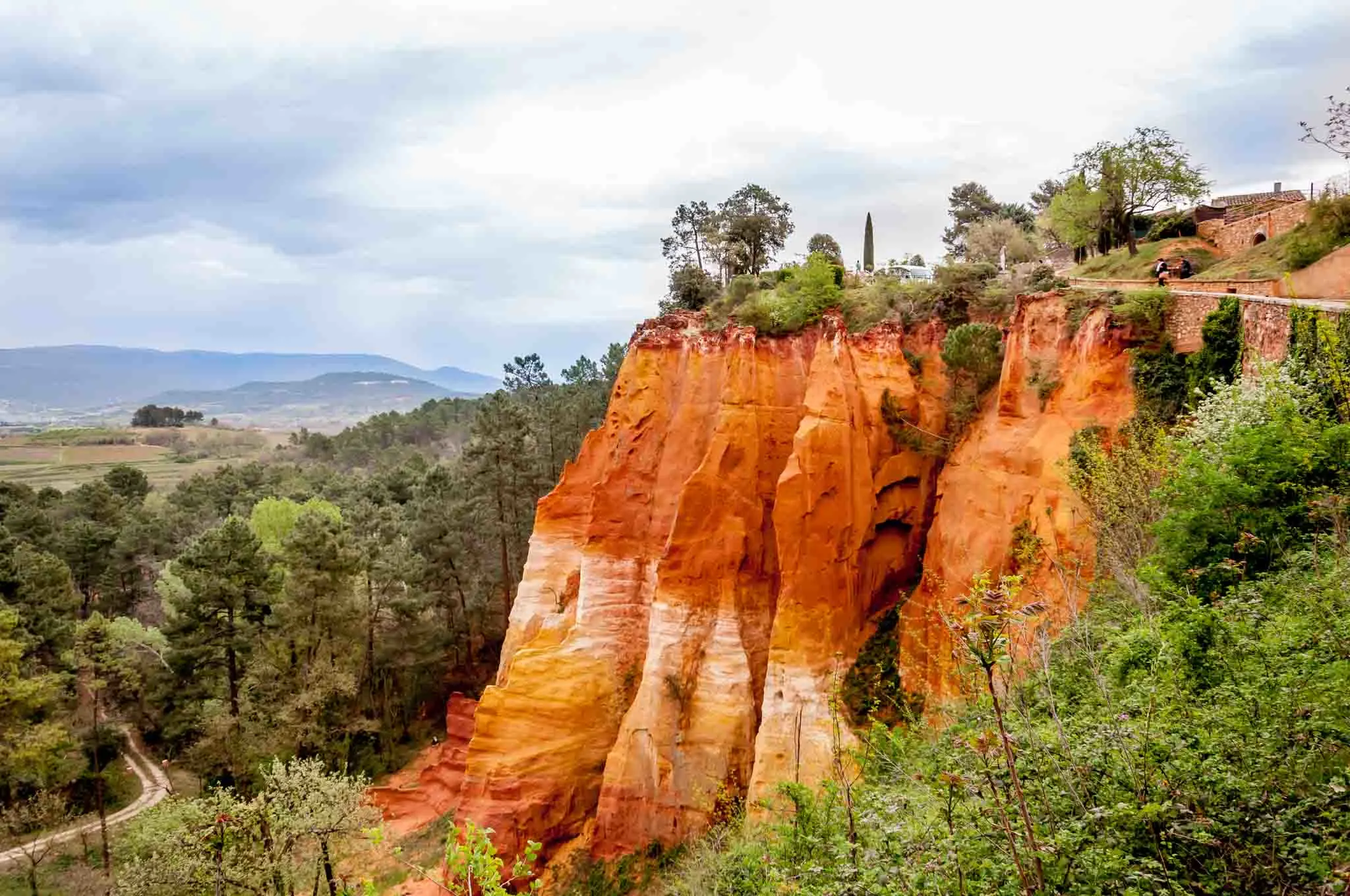
The yellow and orange Ochre cliffs of Roussillon are famous landmarks in France. They were formed as a result of the mining of ochre, which was a source of non-toxic dye. Today the quaint town of Roussillon sits atop the cliffs.
Take a hike along the Sentier des Ocres (the ochre footpath) which begins at the edge of Roussillon. Explore the bright orange cliffs on clear sky days. You can either follow the 35-minute loop trail option or the 50-minute loop trail option. Be sure to pack a pair of sturdy hiking boots for your walk. Note that some sections can be very slippery when wet.
Omaha Beach
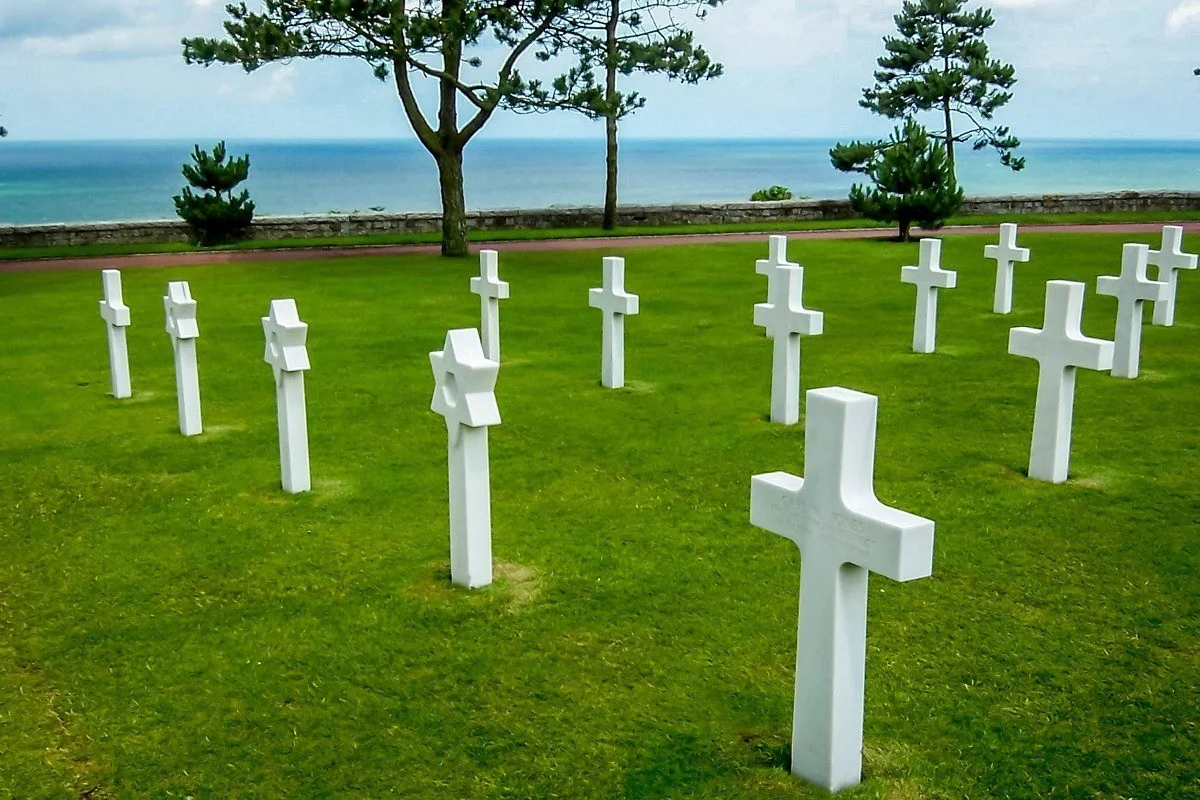
Located in Normandy, Omaha Beach is where the American troops landed on D-Day during World War II. These sections of flat beaches were actually the scenes of fierce battles. Thousand died or were injured in storming the beaches, and this landmark serves as a memorial of that fatal day.
For us, vising this site was a deeply somber experience. Nowhere was that feeling more pervasive than in the Normandy American Cemetery and Memorial, where you will find thousands of white crosses facing the American continent to represent the lives that were lost.
There is also a quaint chapel overlooking the beach and a bronze statue known as “Spirit of American Youth Rising from the Waves.” Check out the Wall of the Missing, which mentions the names of 1,557 soldiers whose bodies were not recovered.
Monet’s Gardens in Giverny
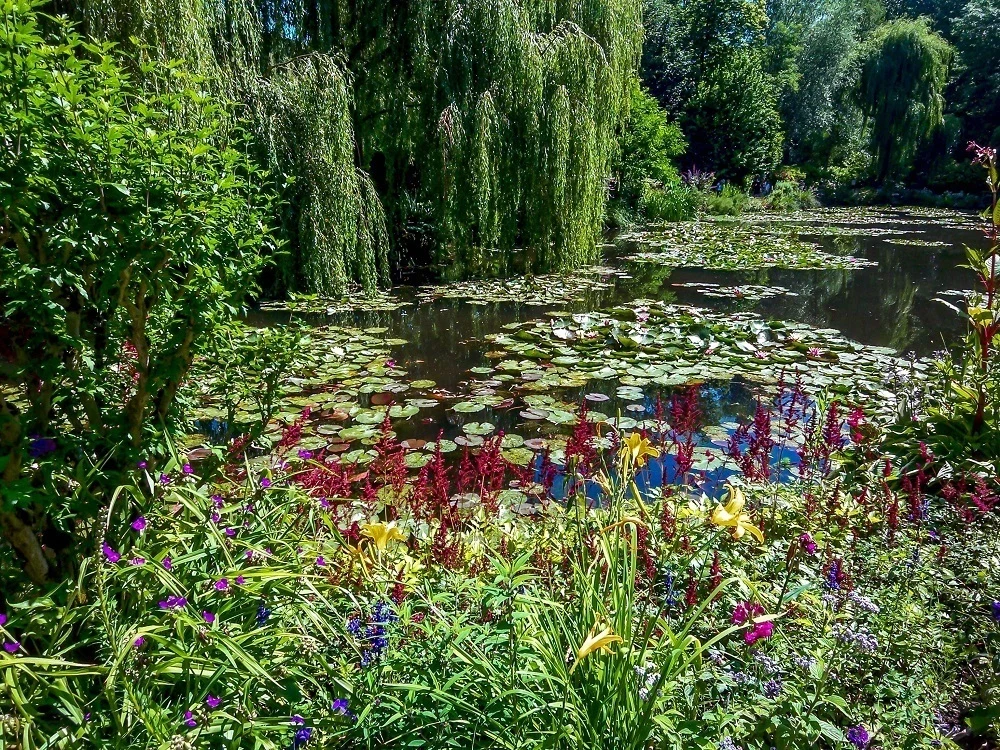
If you are a lover of art, history or nature, you should consider adding Monet’s Garden to your list of landmarks to explore while in France. Monet’s Garden was home to the distinguished artist Claude Monet for 43 years and was the inspiration for most of his popular paintings.
Take a stroll through the iconic gardens and marvel at the beauty of this well-kept landmark. Play a personal game of trying to link his pictures with the garden in its full bloom. For example, you can compare his most iconic water lilies painting to the garden’s water lilies.
I discovered the Monet’s lilies at the art museums in New York, but was blown away by visiting his actual garden.
Honfleur Harbor
Once a defensive port, the Honfleur harbor is one of the most beautiful harbors in France. Located where the River Seine joins the English Channel, the harbor is surrounded by 17th century buildings that attracts tourists in droves because of their vintage feel and reflection in the harbor’s waters. In fact, we think this is one of the prettiest small towns anywhere in the world.
The harbor is still in use by the locals who dock their sailboats and yachts here, as well as fishing boats that bring fish daily. One of the major things to try out is the local seafood cuisine in any of the restaurants located in the harbor’s old dock. You will also find artists who come to paint the beautiful scene, following in the footsteps of the famous 19th-century artists who also frequented the harbor.
Etretat Sea Cliffs
Étretat is famous for its chalky coastline and its whitewashed cliffs that climb out of the Atlantic Ocean (particularly at high tide). This idyllic location has been a popular attraction for many years. The cliffs are a beauty to behold. Having inspired artists for generations, you can see why people come to paint or photograph the cliffs (particularly at sunset).
The beach is rocky, but you can also lay out under the cliffs, or risk dipping a toe in the cold Atlantic waters.
The Tapestry of Bayeux
The Tapestry of Bayeux is an amazing preservation of French history. It tells the epic story of the conquest of England by William, Duke of Normandy in 1066. The 70-meter-long linen cloth has scenes from the conquest stitched in wool thread. Laura totally geeked out at this on our first trip to France as she had studied the tapestry extensively in school.
The Bayeux Tapestry can be found on the first floor of the Bayeux Museum. There are audio guides on the tapestry provided in 16 languages. Do not stop at the tapestry; explore the rest of the facility. Check out the exhibition showcasing how the tapestry is made and providing historical context for the events depicted in it.
Dune du Pilat
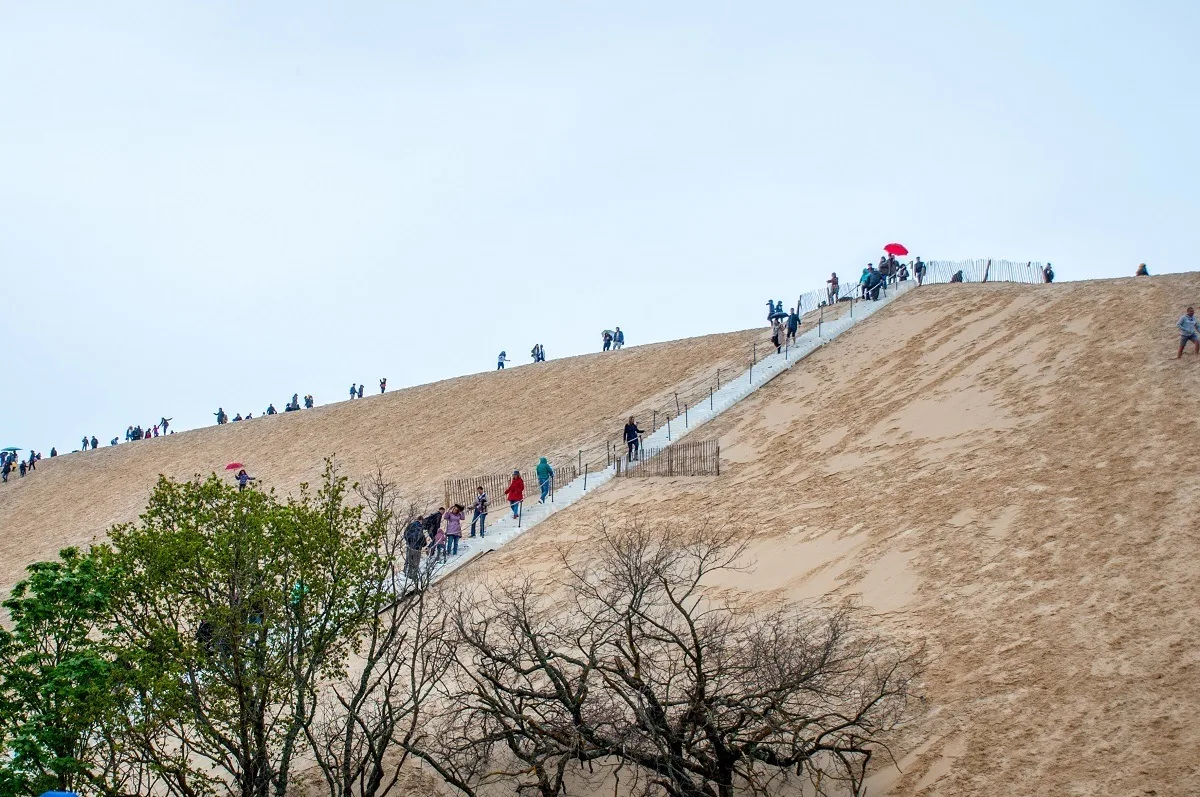
Dune du Pilat is a major natural landmark in France. This is Europe’s largest sand dune and was made as beach sand was pushed westward by the strong Atlantic winds.
The dune features different layers of sand and old forest soils, with each one of them having its own unique composition. It is particularly beautiful at night since the light changes and makes it become more colorful.
Anyone can climb the dune, but be careful, it’s steeper than it looks. It’s also a major spot for paragliding due to the strong winds and updrafts.
Miroir d’Eau in Bordeaux
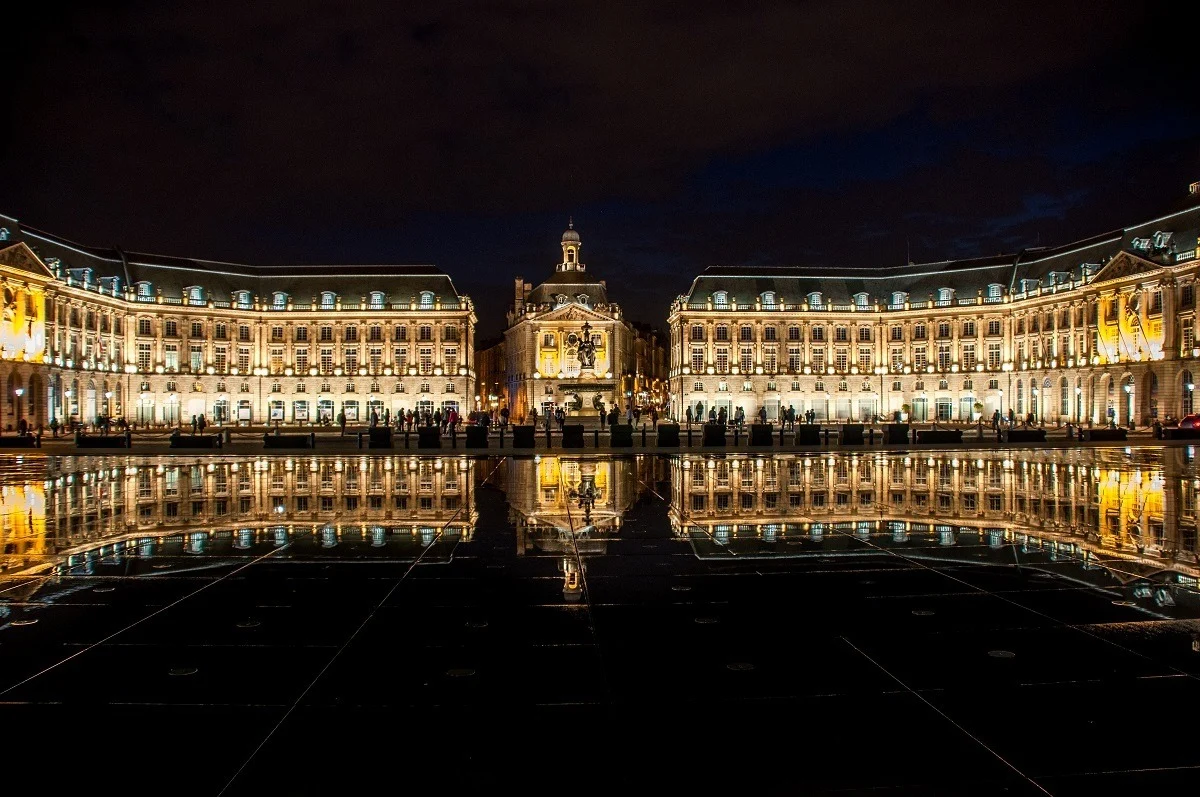
A more recent landmark built-in 2006, the Miroir d’Eau is the world’s biggest reflecting pool. This water feature/fountain/reflecting pool covers 3450 sq meters of black granite on the Garonne River promenade and is located immediate in front of the Palais de la Bourse.
The Miroir d’Eau is made of granite slabs which are covered by 2cm of water. On sunny days, reflections can be seen off the water, which is drained and refilled every half-hour. Also, every 23 minutes, you will see a thick vapor over the pool that lasts for three minutes.
The reflections cast off the mirror are stunning! It was a favorite spot for us when visiting Bordeaux and we spent a lot of time trying to photograph the “perfect shot.”
La Cité du Vin
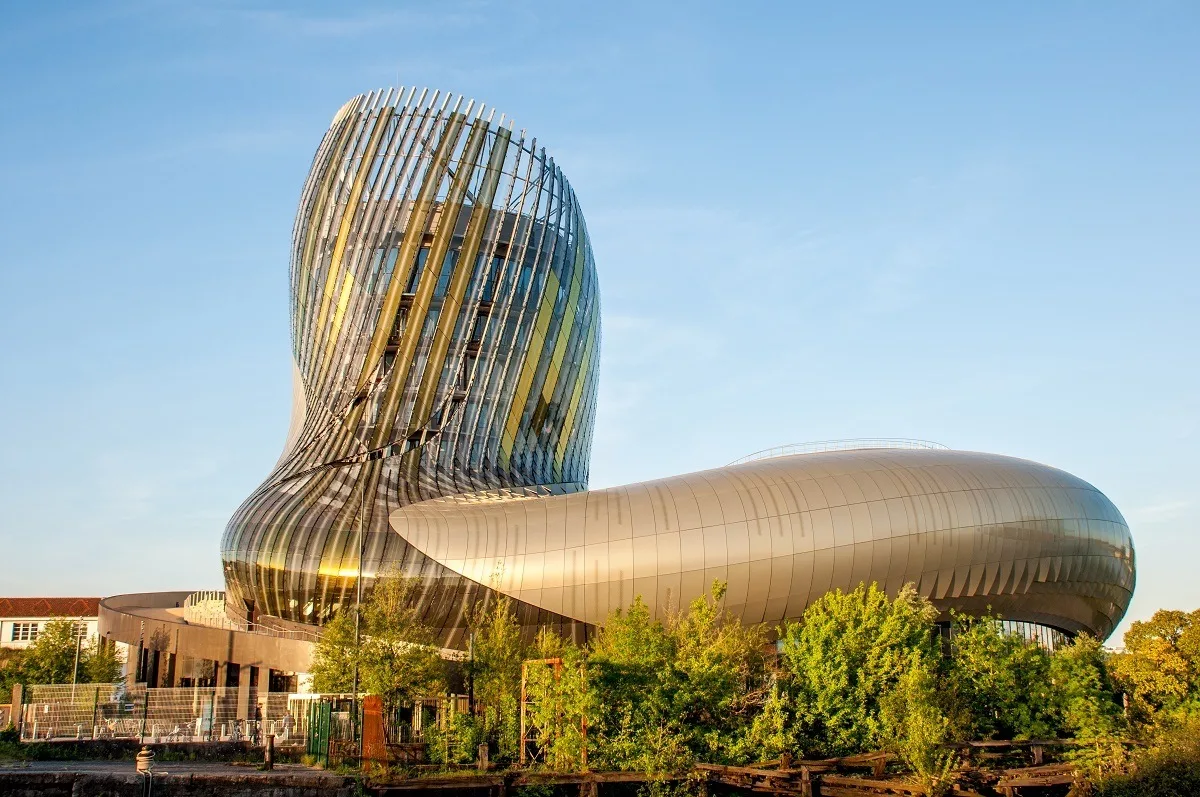
If you are a wine enthusiast with an appreciation for unique architecture, then a visit to La Cité du Vin is in order. At this iconic building, you can learn about wine (and specifically Bordeaux wine) and its evolution while taking in the facility’s incredible design.
While visiting, catch the exhibit about viticulture, making wine and, best of all, tasting wine. Then head up to the observation deck for some incredible views of Bordeaux city, while wine tasting. And, if you’re feeling like a splurge, have dinner at the restaurant.
Château Pichon Longueville Baron
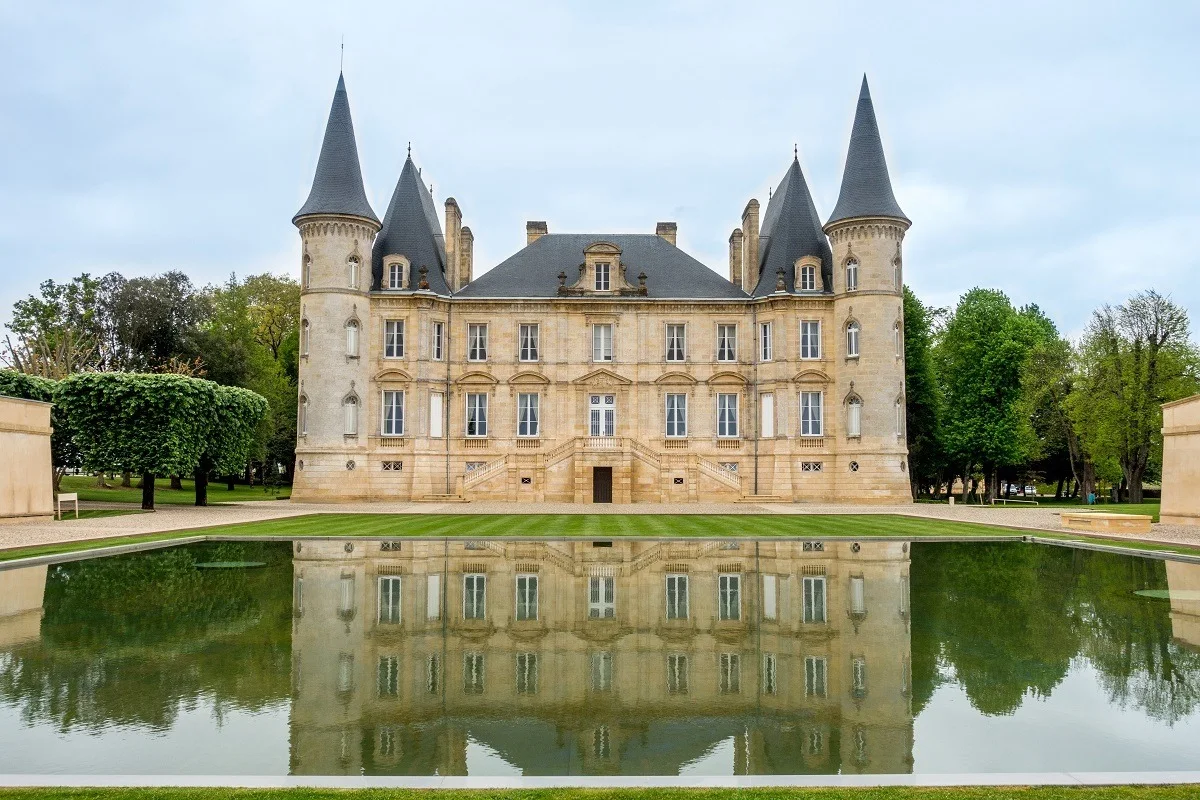
A visit to the Château Pichon Longueville Baron is one of the best experiences to have while visiting the Bordeaux wine region of France. Visiting Château Pichon Longueville Baron will take you through the property and its vineyards which produce some of the best wines in France.
Visitors will see the small lake in front of the mighty Château designed to keep the barrel cellars cool. Go underground and get a tour of the barrel room and cellars. And, best of all, visit the tasting room to try some of their magnificent wines. Be sure to buy a few bottles to take home. When you see the prices in your home country, you’ll be glad you did!
Pont du Gard
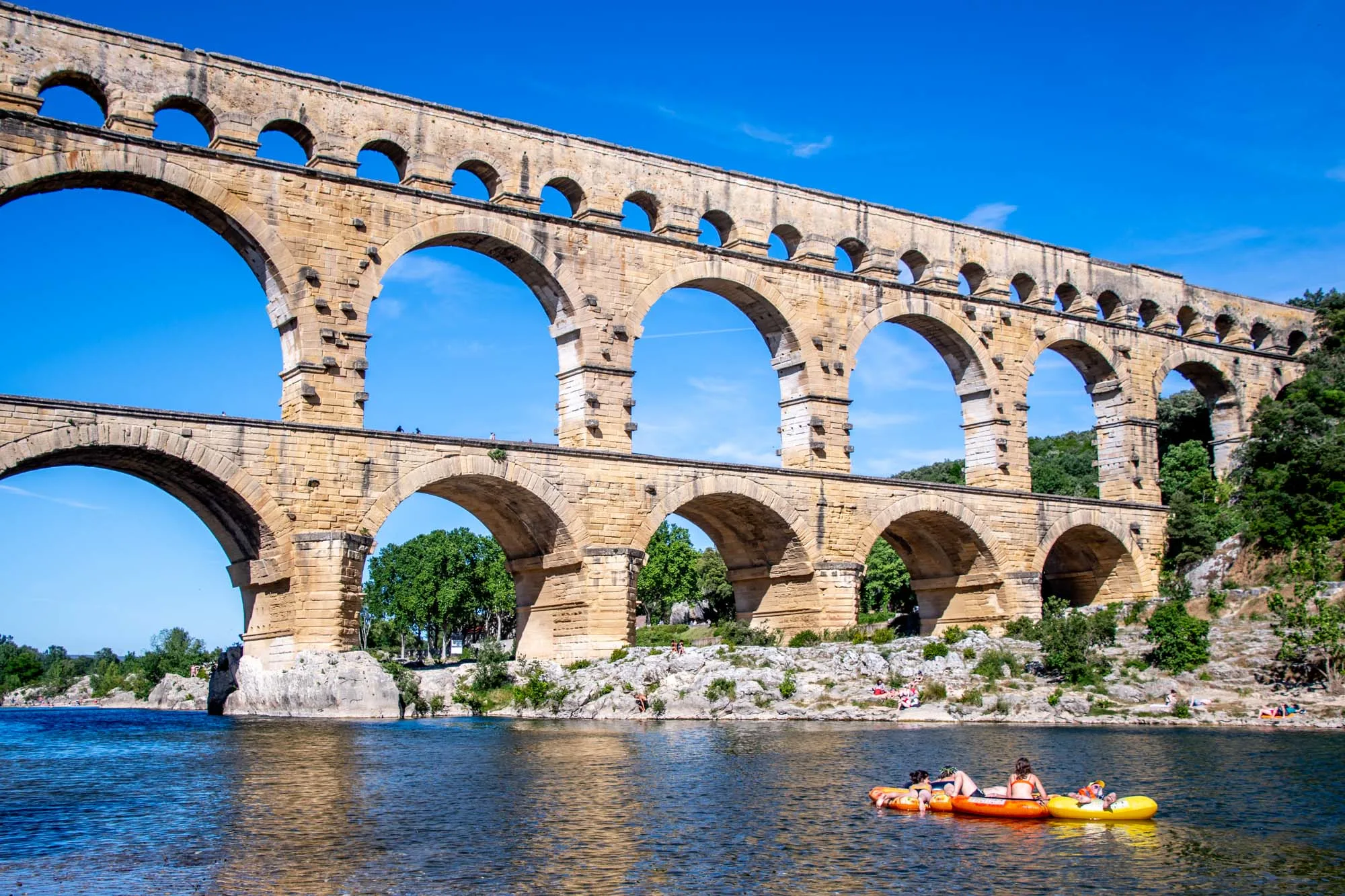
Pont du Gard is part of a historic aqueduct in Nîmes, a former prosperous colony of the Roman Empire. The aqueduct was built by Marcus Vipsanius Agrippa around AD 50 to solve the city’s water supply issues.
Pont du Gard was built to support the aqueduct pipeline, which crosses the Gardon river. It was used for this purpose for centuries and later as a pedestrian bridge.
Built without mortar, Pont du Gard is an architectural masterpiece that was 48.8m high and 275m long. You can find a museum at the left bank of the river where you can learn more about the history of this fascinating bridge, which is now designated as a UNESCO World Heritage Site.
Parc National des Calanques
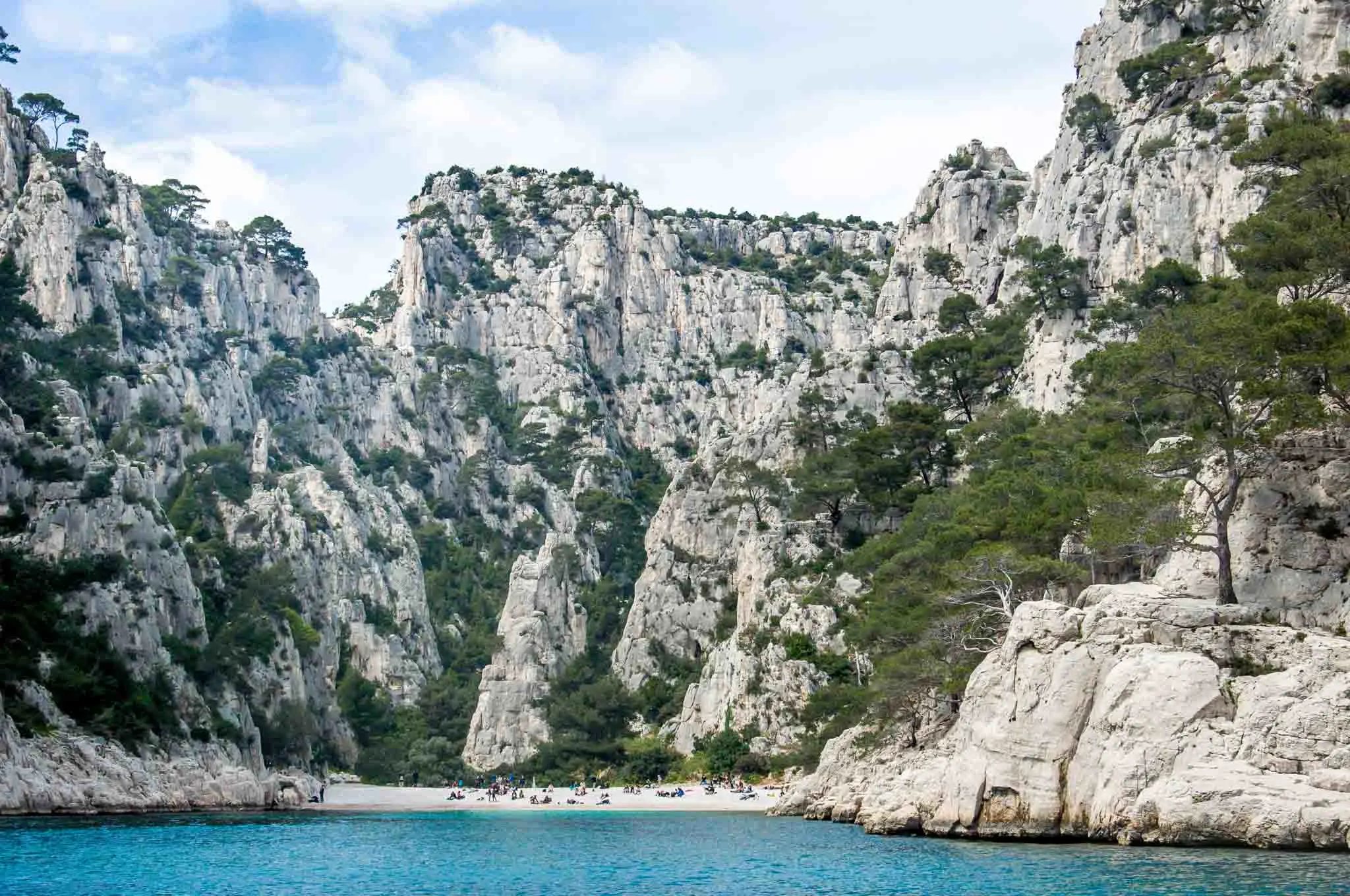
Parc National des Calanques is a prominent natural landmark in Southern France. The park stretches from Marseille to the small town of Cassis, following the coast of the French Riviera.
The park takes its name from the impressive Calanques, which are rocky inlets found between cliffs of limestone topped with pine trees. The park has nine such inlets near Cassis.
If visiting, explore the parks most popular inlets, such as the Calanque de Port Miou, the Calanque de Port Pin and the Calanque d’En Vau by kayaking or hiking. And be sure to bring a swimsuit to dip into the cool refreshing water on a hot day!
Basilique Notre Dame de la Garde
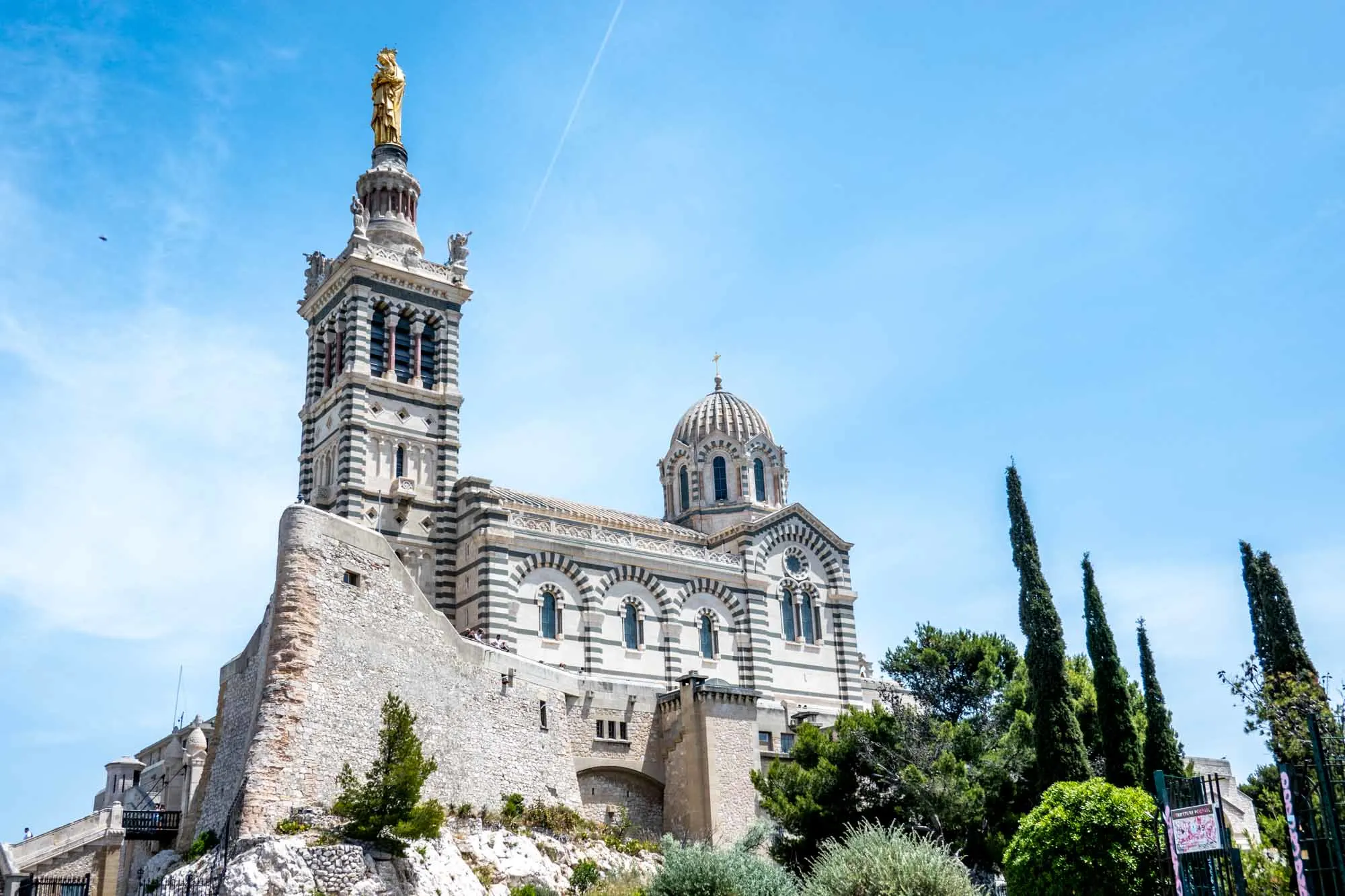
The massive Basilique Notre Dame de la Garde in the city of Marseille is one of the most popular landmarks in France. At the Basilique de Notre-Dame de la Garde, you will find a 60m high bell tower with a 10m tall statue of the Virgin Mary placed atop a 14m high pedestal. This statue is believed to be the protector of sailors and can be seen from land and from the sea.
The walls of the Basilica are also covered in impressive mosaics. Take a tourist train from the Vieux Port (old port) and explore this emblematic landmark. Once done exploring the church, walk back down to the port and take in the views of the boats in the harbor.
Cathédrale Notre-Dame de Chartres
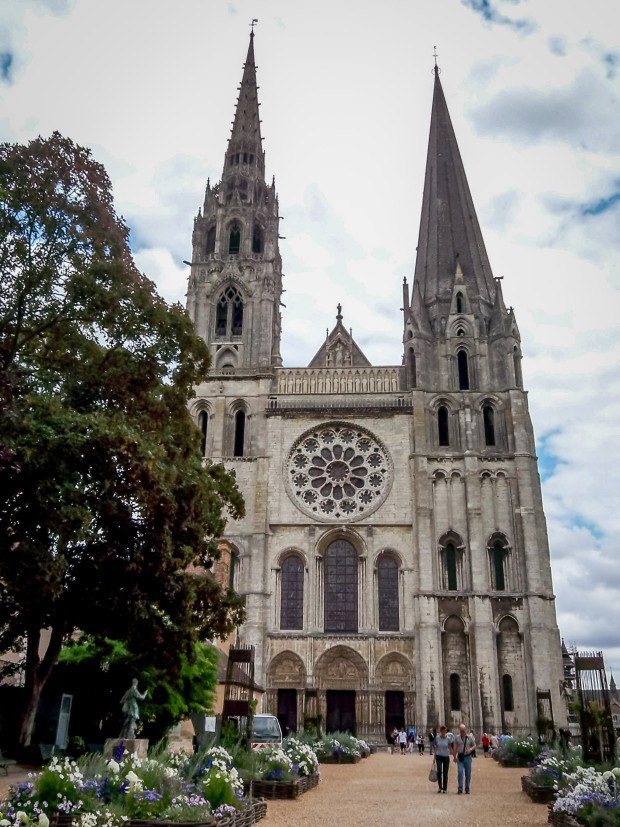
The Cathédrale Notre-Dame de Chartres is a popular tourist attraction thanks to its gothic architecture. It is a Holy Site for religious pilgrims who visit the cathedral to worship the veil of the Virgin Mary known as “Sancta Camisa,” which they believe was worn by the Virgin Mary when she gave birth to Jesus Christ.
Beyond its religious connotations, the Cathédrale Notre-Dame de Chartres draws many tourists who are fascinated by its unique architecture and impressive stained-glass windows depicting scenes from the Bible. We stopped in while driving back to Paris from Brittany and found the cathedral made a great rest stop!
Cathédrale Notre-Dame de Reims
If you are looking to learn more about French history while admiring an architectural masterpiece, you should visit the Cathédrale Notre-Dame de Reims. This cathedral built in the 12th century is a beauty to behold with its spectacular façade, stained glass windows, and a priceless 15th-century astronomical clock. The inside of the cathedral is full of sacred art and relics, including a sculpture depicting Joan of Arc in full amour.
The cathedral is also popular as the location for the coronation of French kings, with over twenty coronations having taken place here.
Mont Blanc
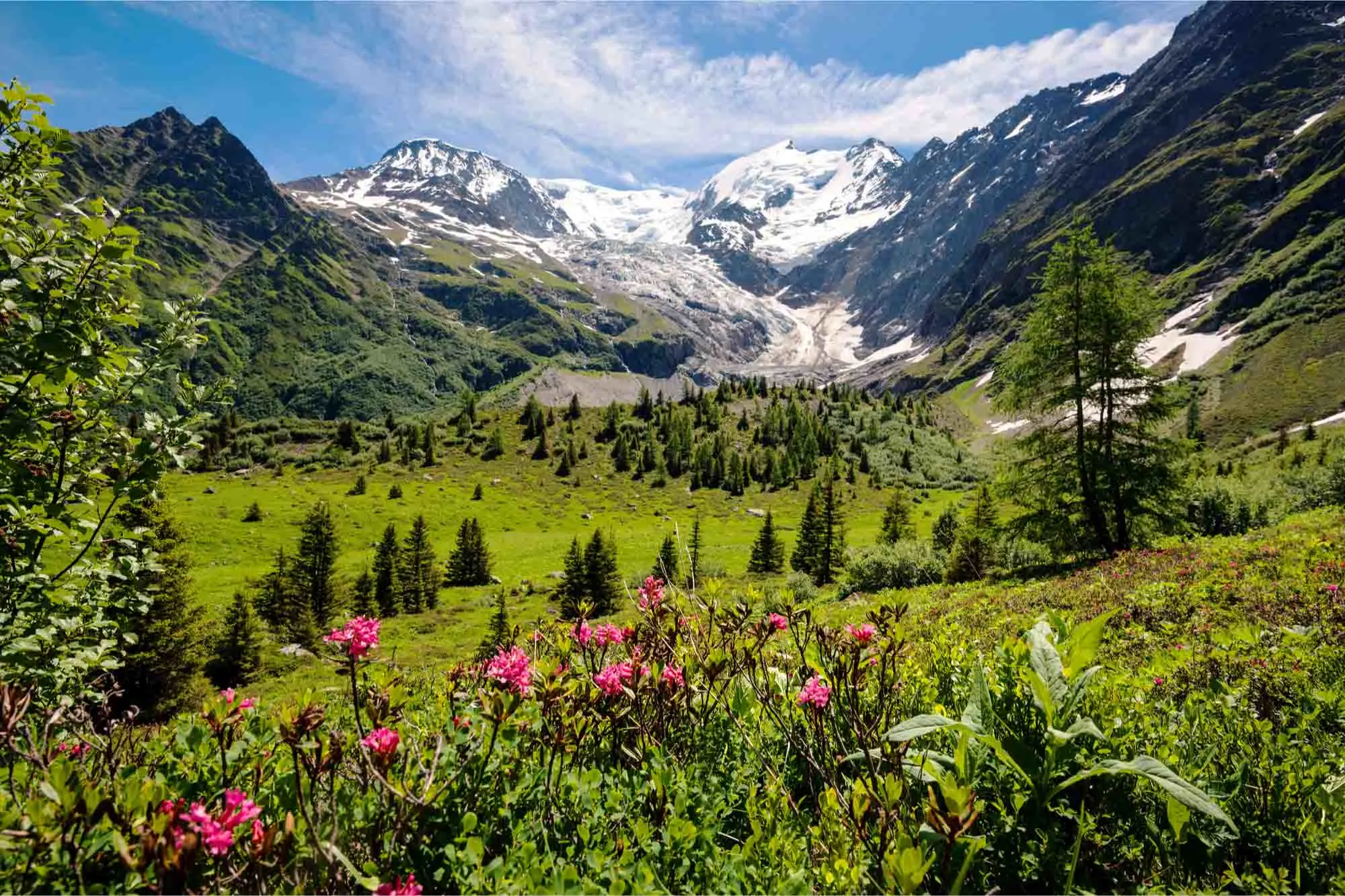
Rightly nicknamed the High Roof of Europe, Mont Blanc is the highest peak in the Alps and the highest mountain in Europe. Its features include beautiful mountain vistas, glaciers, icefalls, alpine lakes, and skiing in the winter.
There are three main ways to explore the mountain. You can explore the mountain on foot, going on the mild hikes to the viewpoints that are easy to reach. You can get on the Tramway du Mont-Blanc, which takes you partway up the mountain. Or you can ride the Mont-Blanc Gondola, which soars near the upper summit.
Cite de Carcassonne
The first citadel of the city of Carcassone was erected by the Romans. Today, the Cité de Carcassonne is the largest European citadel with its walls intact.
There are many things to see at Cité de Carcassonne. There are the parts of the Cité de Carcassonne, four points of entry along the citadels fortified walls which are equipped with intricate defense systems.
You can also catch a performance at the Théâtre de la Cité, the citadel’s old open-air theatre which was renamed Théâtre Jean Descamps in honor of a famous French actor.
Château de Fontainebleau
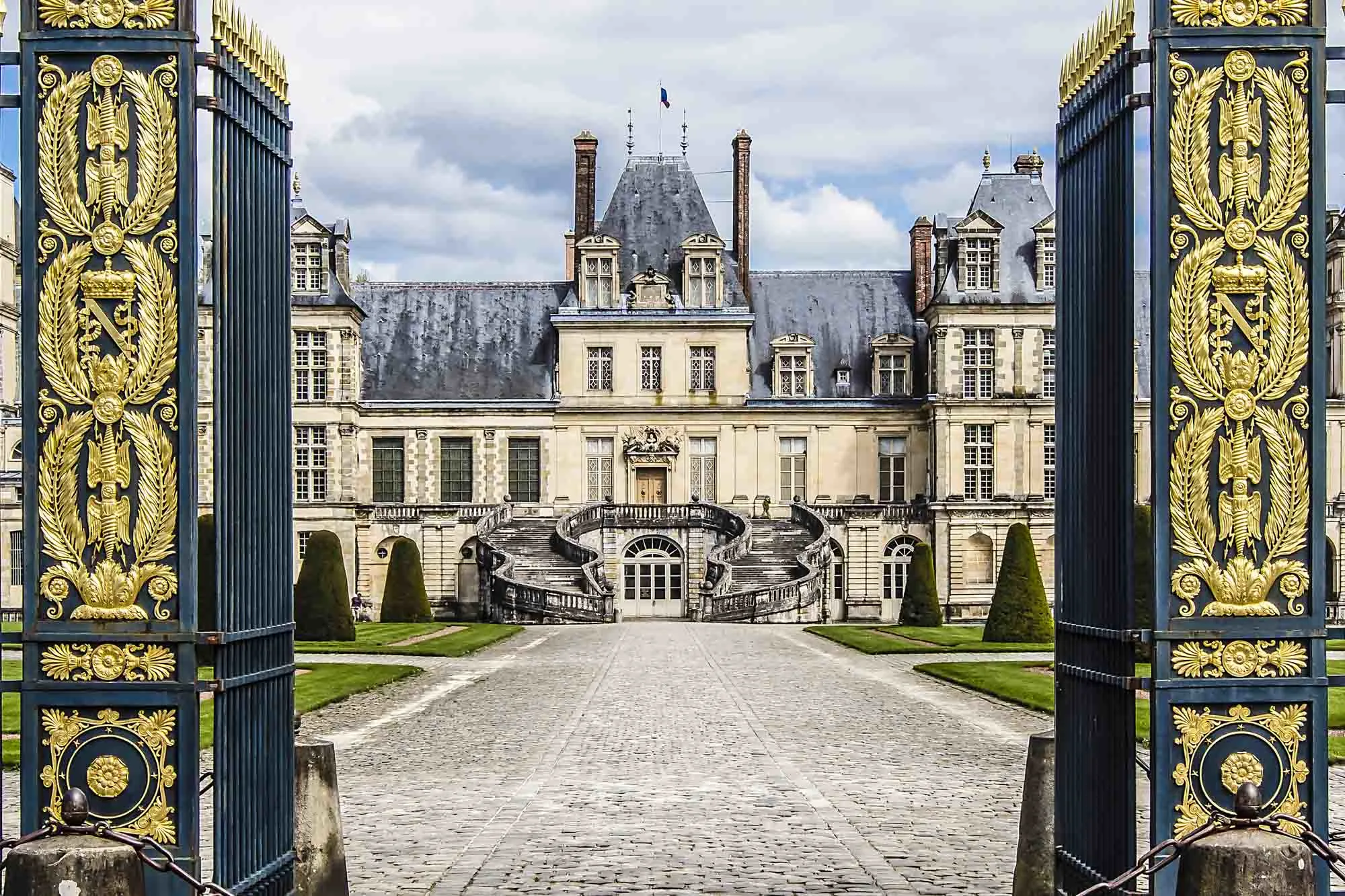
The Château de Fontainebleau was used as a pleasure palace by French kings. The Palace features the eclectic style of each king that had a role in its expansion, starting from François I to Napoléon I.
When visiting, pay particular attention to art, which spans all of Europe’s great artistic periods. Outside, check out its gardens and explore the surrounding park either by hiking, biking, or going on a horse ride.
Carnac
The Carnac is one of the most popular prehistoric burial sites in Europe. It is made up of groups of thousands of stones covering over 99 acres of land. The stones in the Carnac are divided into two types: menhirs aligned in lines believed to serve as “fields of remembrance” and dolmens used in burials over 6,000 years ago.
Apart from the menhirs and dolmens, you will also see the Tumulus of St. Michael, which is located at the highest point of the Carnac.
Lascaux Caves
Discovered by children in 1940, the caves at Lascaux feature over 600 prehistoric cave paintings on the walls and ceilings created by some of our earliest ancestors.
While you may be unable to access the caves directly because they are closed to the public for preservation purposes, you can visit its amazing visitor centre, where you will find full replicas of the paintings in the caves. The excellent guided tour will introduce you to the history of the site and provide interpretations of the drawings and paintings in the caves.
Pampelonne Beach
The Pampelonne Beach is the most popular of all the beaches along the beautiful French Riviera. The beach’s proximity to the resort town of Saint Tropez is part of its appeal. This is consistently ranked as one of the prettiest beaches in the world.
The beach is divided into two parts; one side is public and free of charge, and 23 beach clubs populate the other side. You can spend a leisurely day walking along the beach and playing fun beach games, or you can go over to the beach clubs for a luxury experience at the beach.
Millau Viaduct
Near the quaint little town of Millau in Southern France, you will find the Millau Viaduct. The Millau Viaduct is a massive cable bridge that connects one bank of the River Tarn to the other. This famous structure was the tallest cable-stayed bridge in the world at its time of construction in 2004.
Visit the Millau Viaduct Information and Tours Center, which is part of an old stone farmhouse located in the middle of the Viaduct’s large motorway rest area, to learn more.
Abbey of Fontenay
As already seen, France is known for its numerous religious structures, with some of them being truly significant structures worth exploring. The Abbey of Fontenay is one such structure because it has retained most of its original buildings, which were constructed around 1118 in the Roman style of architecture of the era.
Visitors can see the Abbey’s original buildings, including the old refectory, the cloister and dormitories used by the monks who used to live here. Although the courtyard may be the most impressive in all of Europe.
Laura Longwell is an award-winning travel blogger and photographer. Since founding Travel Addicts in 2008, she has written hundreds of articles that help over 3 million people a year get the most out of their travel. In that time, she has visited nearly 60 countries on 5 continents, often returning to favorite destinations over and over again. She has a deep love of history, uncovering unexpected attractions, and trying all the good food a place has to offer.
In addition to Travel Addicts, Laura runs a site about her hometown of Philadelphia—Guide to Philly—which chronicles unique things to do and places to see around southeastern Pennsylvania. Her travel tips and advice appear across the web.
